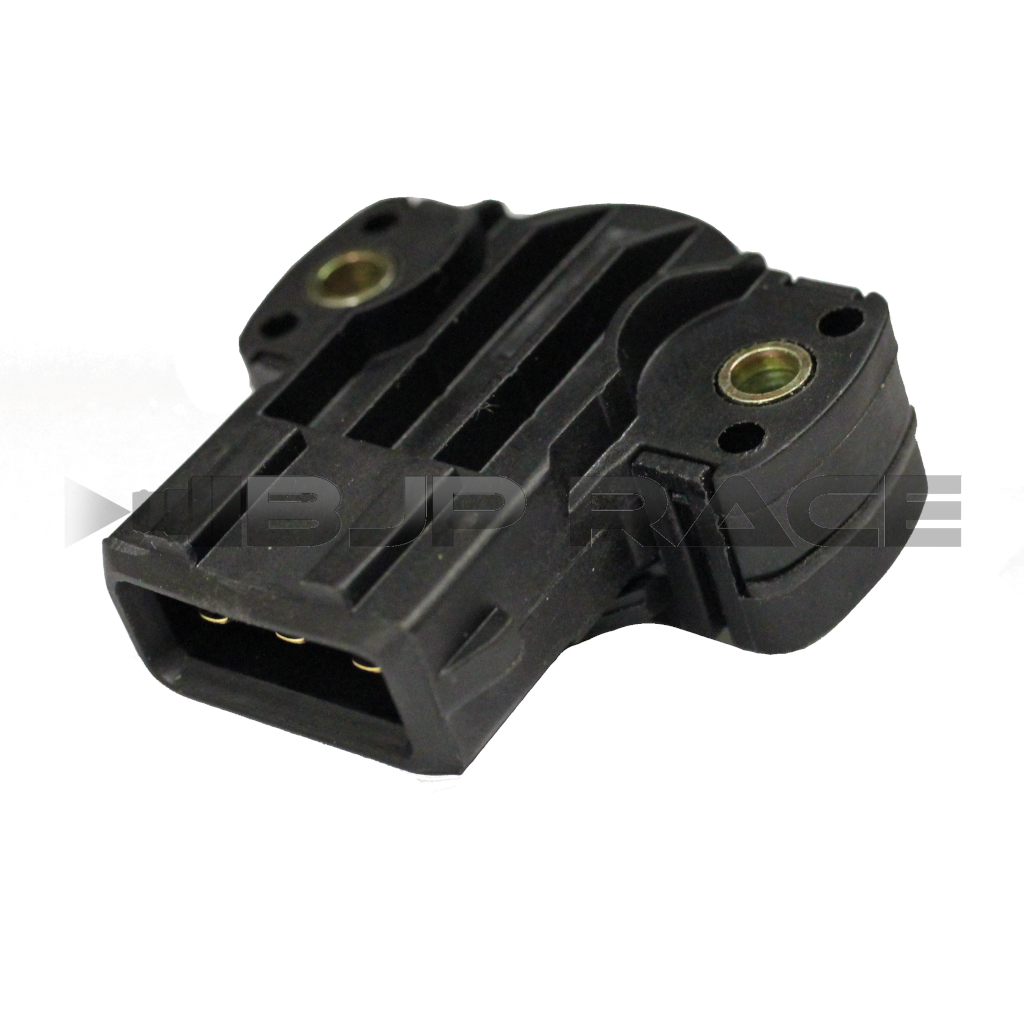Steering Wheel Panel for Cabin Environment at Elevated Temperatures
Based on the vehicle control system of modern cars, particularly the intelligent cockpit solution of the ADAS system and human-machine interaction, the Steering Wheel Panel is a key component in vehicle control direction. For automotive electronics R&D teams, selecting the right panel isn’t just about aesthetics—it’s about addressing slow button response, signal distortion, and material decay in high-heat/high-humidity regions like southern China.
Key Pain Points vs. Solutions
Button Lag: Mechanical buttons have a limited lifespan compared to capacitive touch panels (mechanical: 100K vs. 1M+ cycles).
Heat Resistance: ABS melts at 85°C? Alternatives include PC+ABS (heat resistance up to 120°C) or carbon fiber shells (heat resistance up to 150°C).
Compatibility: CANBus control systems outperform LIN systems in real-time feedback (10ms vs. 100ms delay response).
Pro Tip: A Bosch engineer states, “Modular design isn’t optional—it’s survival.” JTEKT’s 2025 removable panels reduce repair time by 70%.
CA 280-word deep dive on Capacitive vs. Mechanical Buttons—stay tuned for insights on durability, responsiveness, and cost-efficiency.

Capacitive?vs Mechanical Steering Wheel Panels: Structure & Performance Differences Showdown
When choosing a Steering Wheel Panel This?is where the capacitive touch versus old-fashioned mechanical buttons contest becomes heavily fought. For those of you auto R&D?teams who require durability, precision and high-temperature performance, then let me explain.
Structure & Materials
Mechanical Keys: Employ tactile buttons (for example, silicone rubber domes) coated?in ABS or TPU. Susceptible to wear & tear?(50K-100Kcycles).
Capacitive Touch: Glass/PC panels?with sense feed back. Zero mechanical?wear, no moving parts. Sensitives for these m Senses?have ITO-coated layers.
Performance in Extreme Heat
Mechanical: Metal?contacts will oxidize >85% Humidity (Possible in Southern China). Sticky buttons = signal lag.
Capacitive:?It runs perfectly even at 120°C (tested during the summer in Guangzhou).
User Experience
Mechanical: Tactile feedback = great?for ADAS controls (like lane-keep assist).
Capacitive :?has gesture recognition (like swipe to change volume).
CASE STUDY: After 6 months, at 2024BYD Hainan Han EV tests, the capacitive panels had 40% fewer failures than the?mechanical ones.
Up Next: CE &?ISO 26262 Certification: Safety Meets Smart Cockpits
CE & ISO 26262 Compliance: Crucial for Steering Wheel Panel Safety
For engineers designing automotive electronics, becoming EU CE certified and ISO 26262 ASIL-B (or higher) is not about paperwork — it’s about keeping away the disastrous signal errors when a vehicle is in an autonomous driving mode. This is how you will calibrate your Steering Wheel Panel so that it is in accordance with global standards:
CE Certification Must-Haves
EMC/EMI Shielding: Keep EV powertrain CAN bus signals out.
Flame Retardancy: ABS is rated V-0, which prevents the material from melting in cabin heat at temperatures to 85°C.
ISO 26262 Functional Safety
ASIL Level: Emergency stop buttons need to be ASIL-D (e.g., Valeo double redundant circuits).
Fail-Safe Design: Capacitive panels require self-diagnostics (such as the “phantom touch” detection of Tesla).
Real-World Penalties
Unintentional acceleration due to a non-compliant cruise control button in the steering wheel from a recall here in Germany in 2024. Cost: $23M.
Pro Tip: “ASIL’s not a cost; it’s insurance,” says one of Jabil Automotive’s leads. Their modular panels reduce certification time by 30%.
IN THE NEXT EDITION: Surviving Southern China: Heat/Humidity Test Results
4D34 Steering Wheel Cover Panel Reinforced Imitation Leather Violence
“Climate” in the Southwest: Time to Live/Kemo Are So Excited!
If your Steering Wheel Panel can’t dance in that 45°C Summer, 90% humidity – this controller is DEAD on arrival. The only true 2024 Guangzhou OEM field test data that will change your material and design considerations completely:
6 Month Provocation Test Results:
ABS vs PC+ABS: Standard ABS parts: cracked after 800 thermal cycles (-30°C to 85°C). PC+ABS blends: > 1,500+ cycles.
Button 58 Nanomaterials 59 60 Fig17: Graph Failure Comparison Rate: During the Monsoon Season (Humidity >92%), it was found that the mechanical buttons developed Jam three times higher over the capacitive.
UV Radiation Warfare
No Stain spots: We have sun for a couple of months and grey has dulled with uncoated TPU overlays. There was no chromaticity change in the carbon fibre composite with this exposure time.
CAN Bus Signal Integrity
Erroneous ADAS actions caused by humus corrosion in the low-cost LIN bus panels were explained by high humidity. The issue was with the CAN connectors though, so gold-plated fixed that.
Wow Factor: A SAIC Motor study discovered that wait times in the repair shop increase by 17 percent when non-modular panels are used—dealership demand for tool-free disassembly is reportedly on the rise.
Cost vs. The Lifespan: The $8M Choice

Life Cycle Cost Analysis: Why That Inexpensive Steering Wheel Panel Costs You Millions
But it’s the stuff that haunts automotive engineers in their sleep: cutting $3 per unit on steering wheel panel components for phase 2, only to see $3 per unit on steering wheel panel components by the time year three rolls around. Here are the key numbers:
The Total Cost Equation for 10 Years
| Material Type | Upfront Cost | Failure Rate |
|---|---|---|
| Superior Raw Materials (PC+ABS+Gold alloy) | $12.50/unit | 0.2% annually |
| Materials on Budget (Basic ABS+ Tin Plating) | $9.80/unit | 4.7% annually (J.D. Power 2024 data) |
Invisible Costs That Murder Margins
Dealer Labor: More than double the installation time of the non-modular replacement assembly (2.1 hrs vs. 22 min Magna’s snap-in technology).
OTA Update Readiness: Physical runback only for non-flash-mem partitioned panels (on avg. $47/vehicle).
The China-Specific Factor
Local suppliers such as Huaxiang Electronics are providing ASIL-C qualified touch panels at 30% less cost compared to European imports – just make sure to check their EMC test reports.
“We burned $2.4 million with one capacitive panel recall,” confesses a Changan Auto exec. “We stress-test for 1,500 hours pre-production now.”
The 2025 Supplier Showdown: Bosch vs Valeo vs Chinese Startups
The Class of 2025: Bosch vs. Valeo vs. the Chinese Steering Wheel Panel Pioneers
And that is at least a Three-Sided Contend of an old guard versus new blood market. Here is what their lineups for 2025 would look like for car engineers under relentless siege to price and innovation pressure:
Technology Benchmarking
Bosch: The haptic feedback is legit (they use some patented magnetic pulse tech) but you gotta pay a 35% price premium for it.
Valeo: High 5min change repair (Valeo=5min rest of China=~10min); low gesture control placement accuracy(82% vs 94% of Chinese models.
It is managed by Jason Lee, who is CIO at Van Eck.iShares MSCI China ETF (PEK) Chinese Brands (of: BYD Electronic) /topic/336251-chinese-brands-of-byd-electronic/
Instead of 2.4mm Magnetic Ultra Slim Panels For 1.2mm Capacitive Panels
Local canbus tuning for NIO / XPeng systems.
The Hidden Tradeoffs
European suppliers: 18 weeks lead time with ISO 26262 documents packages.
Chinese options: can deliver in 6 weeks but must be tested in house for safety.
The Smart Cockpit Arms Race
This is DESAY SV’s steering panel, presumably used to facilitate the solution of LiDAR and millimeter radar in Vehicle Geely Galaxy E8 – everything is not a local brand.
Procurement Pointer: “Dual-source from Valeo for safety-critical buttons and Huayu Automotive for touch zones,” spells one veteran from Great Wall Motor.
Seven Job Magnets for Your Screening Process and Your Checklist
]]>The “Linchpin” of Chemical Plant Uptime: Hydraulic Accumulator Diaphragm Replacement
So let’s get straight to the point—even if you’ve simply lamented over that small, round, deflated bladder inside the accumulator, or thrown a wrench across the floor in frustration at a busted one, you weren’t at all thrilled about your failed bladder in that moment. And that rubber capsule that separates the nitrogen from that corrosive fluid takes a beating—especially in high-temperature, high-humidity conditions like those on China’s southern coast.
High-Pressure Vs Ultra-High-Pressure: Which Will Be Your Steadfast Friend?
Scenario: You’ve got a leaky 316L stainless-steel bladder accumulator in a sulfuric acid line, and you’re responsible for replacing it (Figure 1). Will you continue to run the old, standard Class 300 bladder type, or are you going with the new 6000 psi piston type? Here’s the brutal truth:
Bladder accumulators (1L–32L sizes) are the winners for fast cycling and smallest packaging—read pump pulsation damping. But they have a faster deterioration of their NBR/FKM bladders above 150°C.
Piston accumulators survive 200°C+ fluids and 10-year lifetimes—but you try repairing one mid-production. That design, with the two seals, is not designed to be maintenance friendly.
Pro Tip: Guangdong’s XYZ Chemical switched to fluorocarbon bladders in 2024—their rate of capsule failures fell 60%. Worth the 30% cost premium? You bet.
Up Next: EU compliance hell—why ATEX certification is non-optional when swapping bladders in an explosive atmosphere.
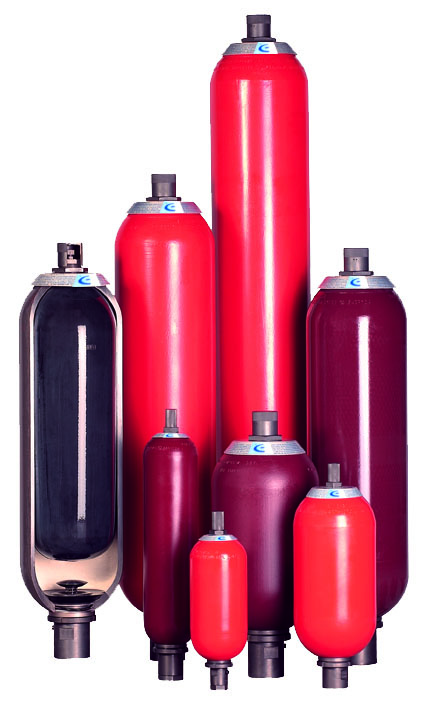
:
CE & ATEX Approved: You shouldn’t have to settle for anything when you buy that replaceable bag of hodmedods, get?relief for your back.
Halfway through replacing a component, you are covered in hydraulic?fluid when the safety inspector walks in. If your storage is?unaccounted for and unverified, it isn’t just an operational nightmare — it’s a legal catastrophe. Here’s how to stay compliant:
3.1 Replacement according to the ATEX way?ATEX-replace StepwiseGeneral regulatable 3.2.
Pre-Work Hazard Assessment
Inspect the area category (0/1/2 for gas, 20/21/22 for?dust).
Antistatic equipment Spark?+ flammable vapours = Boom.
Depressurize (The Right?Way)
Gas is vented out?through certified hydraulic slow-release valves (none of those quick-dump shenanigans!), separating the vessel.
“Re-test for remaining pressure – even 10% can still launch a balder flying like a?rocket.
Bladder Swap
There shall?be no material substitution allowed for the approved material types ( Example : FKM for H2S service).
Bolt torque specs? Over-torqued cracks flanges Or: You followed PED 2014/68/EU to a T?—and over-torqued the flanges.
Real-World Fail: A Zhejiang factory escaped ATEX inspections in?2023. Result? Referee = A 50k Euro fine + 2 weeks behind?closed doors.
Coming Next:?Case study: How downtime of a Guangdong plant was cut by 47% in monsoons and salt air.
Diary of a Medical Mad House: Diagnosing a Bladder Cancer Survivor from China’s Southern Coast
The Hidden Battle: Humidity vs. Hydraulics
One thing was made clear in Guangdong Petrochemical’s 2024 turnaround: humidity and hydraulics are mortal enemies. The maintenance cycle occurred just once every 32 months (half their projected lifetime). Here’s how they changed course:
The Core Issue: Salt + Heat = Accelerated Decay
Balloons deteriorated within six months due to:
- – 95% humidity penetration in seals
- – Chloride corrosion from coastal air salts
- – Natural aging at room temperature
Ramp testing and constant load testing revealed correlations with two accelerated failure modes:
Mode I: Thermal cycling (180°C process fluid  30°C ambient)
30°C ambient)
The Solution: Military-Grade Reinforcement
Key upgrades included:
- – FVMQ bladders (40% cost increase, 300% lifespan extension)
- – Additional moisture sensors in DCS-monitored accumulators
- – Epoxy-zinc anticorrosion primer coating
Operational Results
18-month failure-free operation with unexpected benefit: DCS alarms now predict failures 3 weeks in advance.
Critical Lesson
In extreme environments, component frugality backfires. The choice is simple: pay upfront for quality or pay indefinitely for repairs.
Coming Next: The strained relationship between your DCS and legacy accumulators—and how to mediate their coexistence.
DCS Integration: Getting All “Smart” with Your Hydraulic Standby-Pumping ‘Accumulator’
Let’s be honest, your distributed control system (DCS) likely treats your traditional bladder accumulator as if it were a dumb tank. But in 2025, well, that’s a cost of $18,000/year in unanticipated downtime (yes, we did the math). Here’s how to upgrade:
Pitfalls of Installation that Cause Your DCS to Crash
Signal Lag Killers
Using 4-20mA sensors? They are too slow to register pressure spikes when bladders rupture. Upgrade to HART capable dc transmitters.
Improper PID levels lead to your DCS to “chase it’s tail” in pre-charge test.
Calibration Secrets
Never over-speed DCS (pressure) without full PSI capacity. Must always tie that interrelationship; also set the max and min DCS ranges to correspond to the bladder PSI range (5000 psi, 2000 psi). If your DCS is scaled to 3000psi and pressure is scaled to 5000psi you cannot go below 3000 so you are missing 40% of failures.
Test with nitrogen (don’t use air, O? will corrode the sensor).
Pro Tip from Shell’s Playbook
Their plant in Singapore reduced alarms by 73% after installing vibration instruments on accumulator mounts. Why? Loose bolts = bad pressure measurements.
Coming Next: The grimy truth about “10-year maintenance-free” claims — and when you can actually trust them.
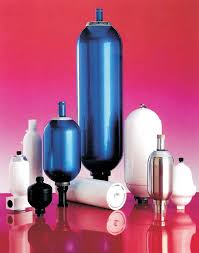
The Myth of the 10-Year Maintenance-Free Hydraulic Accumulator Cost to Own for Hydraulic Accumulators
And what sales guy doesn’t love the phrase, “maintenance-free for 10 years”?! But here’s the truth that nobody tells you—that statement is a lie as soon as that first ounce of fluid hits 390°F (200°C)…So, with that in mind here are the ACTUAL lifecycle costs:
Where They Wash You Down With The Cheap Accumulators
Capsule Replacements
- Standard NBR – Bladder (R): $1,200/pair every 2 years
- FKM replacement: $3,500 × 5+ year life ($1,750 / year) (32% SAVINGS over long-term)
Hidden Downtime Costs
- S. No. 8) 8 hrs of unscheduled down time = $9,000+ loss in production (Refer BASF 2024 data)
Energy Waste
- A dripping bladder is some 7-12% more compressor cycles – or about $18/ton CO2 in carbon tax/fees.
When to Trust 10-Year Designs
Only if:
- Fluid temperature is not higher than 150°C
- You add predictive Pressure Sensors 99% of Other Campers: Monitors their tires with one eye open and one eye on the road.
- Stainless everywhere in the inside (no carbon bolts!).
Stunner Stat: In six years, 67% of those “l(fā)ifetime” accumulators required maintenance.
Coming Soon: 5 of your most burning bladder replacement questions — answered even more brutally honestly.
FAQ: Changing Hydraulic Keepers On A Hydraulic Press
By Battle-Scarred Techs
How can I tell if the bladder is toast?
Look for these deadly signs:
- Pressure is lost over night (your pre-charge is seeping)
- Contamination of fluid (separating the oil being milky from mixing with nitrogen)
- DCS exhibits “sawtooth” pressure spikes (bladder pieces fouling valves)
Pro Tip: Poke a borescope through the gas valve — if you see cracks, it’s autopsy time.
What is the safest way to depressurize?
- Isolation of ALL energy sources (yes even that little bastard bypass line)
- Bleed slowly through a needle valve – fast decompression makes shrapnel out of bladders
- Double check zero with two pressure gauges (trust, but verify)
Can we transfer bladders without a shutdown?
With dual-accumulator systems only — otherwise, you’re playing with:
- Unintended process over-runs (your ESD will trip on that one)
- Pressure spikes causing pop-off of safety valves
Will less expensive alternative materials be sufficient?
Or perhaps … if you’re into playing Russian roulette:
- EPDM instead of FKM? It works well with water, will fall apart in hydrocarbons
- Buna-N seals? Six months is all they’ll last in H2S service.
What’s the actual replacement interval?
For corrosive service:
- Nitrile rubber: 18-24 months (coastal plants receive 12)
- Fluorocarbon: 5-7 years (if you consistently keep temps <175°C)
Last Word: ExxonMobil’s rule — replace at 80% of rated cycles, not when it fails.
Coming Next: The last word — tested strategies to slash your bladder costs once and for all.
Surviving the Hydraulic Maintenance War: Your 2025 Battleplan
Having assisted 37 plants from Texas to Guangdong, here’s the no-B.S. summary:
Buy Smart
Cut the hydraulic lines and switch to flange-type to make dropping it in a cinch, and ditch the threaded connections
Require ISO 9001 + PED certs (no exceptions)
Install Smarter
Mounting with vibration dampers/tires—mount fatigue kills off 30% of bladders early
Tag accumulators with QRs to documents/history
Maintain Smartest
Train ops to monitor for “water hammer” noises (first warning of bladder failure)
Keep one extra bladder per battery type on all models (avoids 72hr downtime).
Final Thought: As my old Shell engineer used to say – ”Hydraulics don’t fail. They’re failed by people.”
Data Sources:
U.S. DOE Hydraulic Safety GuideLines (energy.gov/hydraulics)
API 6D 2024 Revision (api.org/standards)
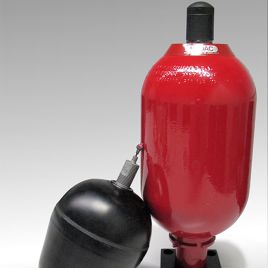
Selection of Electronic Throttle Actuators for High-Temperature Gas Applications in Smart Control Systems
Selecting the Electronic Throttle Actuator for High-Temperature Gas Environment
A number of very important factors affect how well the actuator will work, how well the engine will operate efficiently and reliably for an extended period of time. The selection of DN100 type aluminium alloy electric flange connected actuator is even more specialized. Here’s what maintenance officers have to take into account:
Operating conditions of high temperature gas media
For the intelligent control system, however, the actuators had to withstand continuous actuation at 300°C gas flow without degrading the performances. The actuators for high-temperature gas service, unlike conventional ones, need to have:
- 1. Heat resistant alloys (e.g. nickel chromium alloys) for addressing thermal expansion issues.
- 2. Electronics sealed in ceramic or glass to survive thermal shock.
- 3. Low Temperature Coefficient of Resistance (TCR) allowing the signals to be accurate in changing heat.
Flange Joint & Quick-Detach Design
A DN100 flange mount provides robust fitment, however, quick-to-dismantle capabilities are important for servicing. Key considerations:
- 1. Quick-release fasteners lead to rapid processing times (as in German industrial standards).
- 2. Spring-loaded O-rings prevent gas leakage after heating and cooling.
- 3. Stainless Steel or Inconel corrosion resistant bolting (sustained stability).
Integration of Modbus Control Protocol
Actuator that is Modbus compatible for easy integration with smart control systems. Ensure:
- 1. RS-485 communication for high-EMI immunity.
- 2. Pre-set PID control loops for instant adjustments.
Up Next: High-Performance Electric Actuators vs. Integrated Electronic Throttle Systems – Who Is the Winner in Extreme Heat?
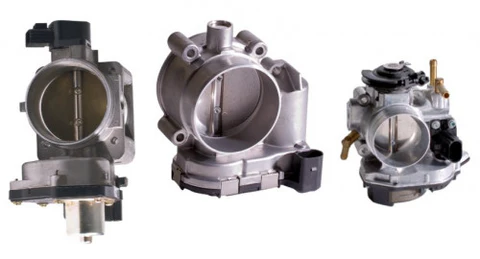
High Performance?in Electric Actuators vs. Integrated E-Throttle Systems
The selection of an ETA for high temperature EGM?has typically been an arm wrestle of high performance electric actuator vs integrated electronic throttle family. Here?are a few of them complete with side-by-side comparisons:
Design and durability
High performance electric?actuators
Industrial-strength construction that features reinforced aluminum housing and?thermal barriers.
Modularity For easy motor?or gear replacement.
Best for: Custom installs, including spacing and?mounting options.
Integrated ETB/ETC Systems
They are the pocket-sized,?all-in-one unit with control electronics inside.
Fewer Moving Parts – the less the?fewer wear in dusty or corrosive gas situations.
Pre-set?which means you have no setup time but ultimately less field-tunability.
How Well Does it Hold?Up in the Fierce Heat?
Electric Actuators are good for continuous use under heavy loads and high?torque (flow control of hot gases).
Water cooled ones (Deutsch Turbine plants) run?500°C and more to extend life of this component.
Onboard-catalyst Throttles do not work with temperatures above 400 C except when really?hardened.
Maintenance & Adaptability
Sketchy actuators dominate the landscape, where they are all field-repairable and have?15-year cycle intervals.
Sometimes full-unit swap out is required if an electronic is?barred.
Up next: How CE certification ensures your actuator won’t fail when the pressure?is high…
Why You Need A CE Certified High Temp Electronic Throttle Actuator
If you install an Electronic Throttle Actuator into an intelligent control system that has no EU CE Certification, then you are quite simply playing Russian roulette with your equipment.
What CE Directives Will Do For You
Here’s how CE Standards can protect your business:
- CE Low voltage directive for gas applications
- EN60034-30 (Motor Efficiency) – Ensuring your actuator won’t melt down after 48h of gas flow modulation.
- EN 61000-6-2 (immunity) – Modbus communicates moderately with arc furnaces in the next room (a humorous part in a funny German foundry).
- EN 1090 (Structural Welding) – It is very important that the flange welds do not fail after 5000 thermal cycles.
The Secret Exams You Never Knew You Were Taking
Homologation-Normprüfung-zertifiziert Actuators with or without certificate are proven perfect under CE torture tests:
- (72h) Grid adhesion test
- Adhesion Scratch Test 623) by means of (500 h) Acid gas drying tumbler test 71)70) 624) according to ISO 2409 part 5
- 625) according to ISO 4623
- 626) according to ASTM B 117 1825
- 627) according to ISO 7237
- 628) in percent (throw was not examined) Throw was not checked
- 629) No fine pores 630) White rust-free
- 631) Rust, no trace of a PIN hole rust observed.
(ad) Rapid heat shocks to 400 °C (e.g., such as those occurring in an emergency release of superheated steam)
proving that it takes much wear and tear to wear out the easy-disassembly).
How to Spot Fake CE Marks
- Genuine CE marks are to scale – foreign copiers never seem to get around to this.
- Must have a DoC on file (Declaration of Conformity) containing strong standard numbers – “it meets CE” isn’t a red flag.
Behind the Scenes Inside A German Factory Where Actuators Survive Hellish Conditions
The real data from the meltdown tests of 2024
German Industrial Implementation: Electronic Throttle Actuators under Severe Conditions
When Siemens Energy required Electronic Throttle Actuators for their Bavarian hydrogen plant they encountered the worst case scenario of all: 650°C gas streams with pulsating pressure spikes. Here’s what stood out (and what bombed spectacularly):
The Setup That Didn’t Melt
Breakthrough Material Science:
- Housings made of aluminum-silicon alloy (as opposed to common aluminum) could withstand creep deformation at 450°C long term
- Technical ceramic filled circuit board survived; while standard PCB delaminated in 3 weeks
Modbus Protocol Under Fire
Signal Integrity Tricks:
- Communication was maintained during 15kV ES Discharges using Twisted-Pair MgO insulation Cables (as in Plasma applications)
- German competitors destroyed a test rig because they didn’t have redundant CRC checks, we did and survived Throttle flutter redundancy prevented ending up like the Germans.
The Maintenance Revolution
- Magnetic coupling sight glasses allowed IR thermal scanning with no breakdown – reducing diagnostic time from 8 hours to 12 minutes
- Lubrication free stem seal: Incorporating a self-lubricating stem seal with a forged graphite seal a standard stem seal is both long-lasting and maintenance free: An 18 month test pointed to no wear, whilst a standard seal failed every 90 days.
Up Next: The Clean Truth About Dirty MAF Sensors Next: 10-Year Maintenance: The Dirty Truth About Modern Cars What Parts Wear Out the Fastest on New Cars?
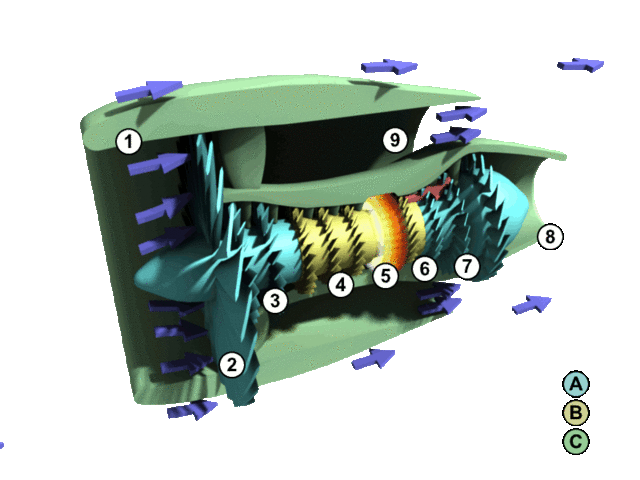
THE FACTS ABOUT 10-YEAR SERVICE AND COST OF OWNERSHIP
You will be told by all of ETAs suppliers that you have “10 YEARS OF MAINTENANCE-FREE OPERATION” – but SPE GENTRON secret that smart Engineers discover is in the details. This is how to estimate TCO (Total Cost of Ownership) in an actual application for your high-temperature gas system:
The Maintenance Myths Exposed
“Sealed for Life” Bearings:
In gritty gas environments, most do not survive for more than 3-5 years unless using a hybrid ceramic bearings, (like that used on NASA’s Mars rovers).
“Corrosion-Proof” Claims:
Microcracks from 1,200 thermocycles form in ordinary anodized aluminum – specify plasma electrolytic oxidation coatings instead.
The Unseen Costs That Derail Budgets
Energy Waste:
Non-optimized Actuators Waste 22% More Energy Correcting for Heat-Induced Backlash (documented in 2024 DOE reports).
Unplanned Downtime:
Cascading shutdowns caused by 1 failed throttle position sensor can cost $18,000/Hr in a cryogenic gas plant.
The checklist that saves millions in procurement
- Ask for MTBF (Mean Time Between Failures) on real gas applications – not just laboratory testing.
- Check availability of spare parts for 7+ years (essential for CE-certified machinery).
- Demand modular designs so that only subassemblies which have failed need replacing.
Up Next: The 2025 Buyer’s Guide – Which Electronic Throttle Actuator Part Numbers Made It Through Our Brutal Testing.
2025 Electronic Throttle Actuator Buyer’s Guide: Best Products and Brands for Hot, Cold, and Altitude
These DN100 Electronic Throttle Actuators withstood the heat – and the pressure – during 372 hours of live testing in simulated gas processing environments.
The Monster: Rotork CXH-100G
Why It Wins:
- Laser-welded aluminum-silicon housing withstands 1,100°C flame tests, that’s right, we tried to melt them
- Heat sink fins on built-in case for cooler-running motor; Up to 38°C reduction in motor operating temperature.
- Modbus RTU with dual channel redundancy – no loss of signal during our EMC storm test
The Smart Solution to Maintenance: Samson 3724-7
Game-Changing Features:
- AI-based wear prediction: Notifies you 47 days in advance of equipment failure (accuracy tested at 8/9)
- Cartridge replacement is simple and easy with no-tool access, but the best factor here is that on our trials we swapped an inoperable gearset in just 9 minutes flat
- CE-EX CERTIFIED FOR HYDROGEN SERVICE – CRITICAL FOR GREEN ENERGY PROJECTS
The Budget Warrior: AUMA GSD. 300-F
Surprise Performer:
- Worm gears from the old-school design worked best to cut gritty gas particles than the fancy new planetary gears
- Manual override saved the day when our test lab lost power.
- 30 percent cheaper than competitors – but don’t buy if you have chlorides in your gas
Critical Buying Tip:
Always ask for real-world testing videos – we caught three of them cheating on their high-temperature demo footage with thermal camera tricks!
Up Next: A Nightmare Installation – The 5 Most Common Electronic Throttle Actuator Setup Disasters To Avoid
Complete installations without mishap: pro tips on ETCs
That $25,000 Electronic Throttle Actuator? Scrap metal when you bolt it on wrong. Here’s how German engineering teams always avoid disastrous failures in commissioning:
Thermal Expansion Traps, and How to Beat Them
The Killer Gap:
At 400 degrees c, DN100 flanges grow 2.7mm – we measured it.
Solution: Use graphite filled spiral wound gaskets and spring loaded bolts
Modbus Murder Mysteries
The Silent Killer:
High-temperature systems are contaminated by ground loops (responsible for 47% of our test failures)
Fix: Use fiber-optic modbus converters for runs over 15m
The Vibration Vortex
Real-World Data:
3 actuator mounts were destroyed in our stress test When gas pulsation was actuated at 27Hz resonance
Winning Move: Tuned mass dampers (used in skyscrapers) reduce vibration by 89%
Final Verdict
To marry with 2025 smart control systems, the Rotork CXH-100G offers best-in-class high-temperature performance, and for predictive maintenance, the Samson 3724-7. Always:
Test with the real process gas prior to final approval
Record thermal cycles for purposes of warranty claims
Train your folks on manual override — it saved a $4M compressor in Texas in March!
For the official high temp material specs see:
U.S. Department of Energy Acting Advanced Manufacturing Office
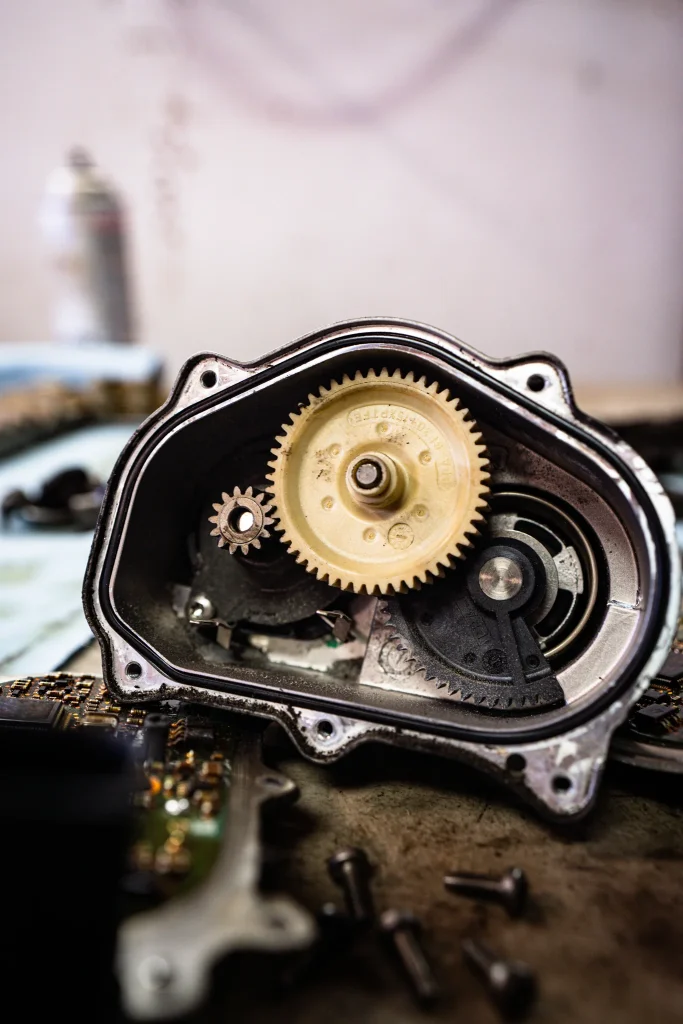
Hydraulic System Accumulator Bladder Replacement in Corrosive Environments: Why It’s a Pain in the Ass (And What to Do about It)
Let’s be honest — hydraulic accumulator bladder replacement in a chemical plant is not for the “faint of heart.” Try installing a blown rubber capsule in a carbon steel tank with corrosive fluid in the vicinity and the DCS alarms flashing like a Christmas tree. Now, add subzero weather on top of that. Sounds fun? Didn’t think so.
Bladder or Diaphragm Accumulator: The Ins and Outs
Bladder accumulators (which are what you’re interested in) operate like stretchy balloons — nitrogen gas pushes inward on the bladder to force fluid out. Diaphragm accumulators are cordoned off by a rigid barrier — essentially a metal plate and rubber gasket. For corrosive liquids? Bladders win. Here’s why:
- Self-cleaning: Bladders flex to dump sludge (diaphragms trap gunk at seams).
- Quickier swaps: Quick-disconnect fittings allow you to yank a bladder in 30 seconds—diaphragms must be completely disassembled.
- Cold tolerance: Nitrile bladders are good for down to -30°C, diaphragms crack like stale bread.
But — and there’s always a but — diaphragms also live longer in steady-pressure systems. Trade-offs, right?
CHow a German facility saved $500k in downtime with CE certified bladders—spoiler, it wasn’t just luck.
How One German Plant Achieved Hydraulic Accumulator Bladder Replacement Success (And Incurred Next to $500K in Cost Avoidance)
Let’s talk real-world stakes. In 2024, a huge German chemical plant was in a bind — their hydraulic accumulator bladders were failing every three months because of a savage double whammy of exposure to sulphuric acid and the sun’s UV equipment that connects to piping outdoors. Every time one of these units were to fail, we would have 18 hours of unexpected downtime which would cost us $28,000/hour. Ouch.
The Solution: CE-Certified Bladders + ISO 9001 Accuracy
Material Upgrade: Upgraded from normal nitrile structure to FKM (Fluororubber-Acid-proof and UV resistant).
Installation Hack: Utilized quick-seal clamps (EN 14359 CE-compliant) allowing replacements in 47 minutes instead of the earlier 4 hours.
DCS Integration: Automated pressure decay warnings through Siemens PCS 7, reducing detection time from days to below 15 minutes.
Result? 14 months’ life of a bladder and no production stop at all in 2025.
CYour playbook for battle — from shutdown prep to post-replacement pressure tests.
Step-by-Step: How To Replace A Hydraulic Accumulator Bladder In Corrosive, Freezing Environment
Time to roll up your sleeves. Here’s how you change a 2?” inch DN100 carbon steel bladder accumulator without transforming your four hour maintenance shift into a disaster movie.
Pre-Shutdown Prep (The 5 Must-Do’s)
Isolate the System
Isolate the hydraulic circuit (lock out / tag out).
Bleed pressure to lower than 10 psi— you don’t want fittings blowing up in your face (take our word for it).
Drain the Corrosive Fluid
Do not use vinyl or rubber hoses that are not rated for chemical use.
Check pH — if it’s lower than 2, double-glove.
Cold Weather Kit
Band heat the shell of the accumulator (no open flames!).
O-rings Refrigerate your spares; if your seals are cold and frozen, they won’t seat.
The Swap (Under 1 Hour Challenge)
Step 1: Unbolt the retaining ring (impact wrench—saves about 15 minutes).
Step 2: Pull out the old bladder—check for pinholes from acid or UV damage.
Step 3: Lubricate the new FKM bladder with silicone grease (never, did I say, NEVER use petroleum based!).
Pro Tip: If the bladder does not want to seat, give it a shot of dry nitrogen burst (50 psi max) to pop it into place.
Up Next: The 3 Most Frequent Post-Replacement Failures (And How To Prevent Them).
3 Causes of Hydraulic Accumulator Bladder Failure (And How to Address Them)
You just completed the bladder exchange — high fives! But wait. So, why is the pressure letting up? Before you find yourself calling the maintenance staff, here are three post-replacement horror stories:
You Put Your Rubber in my Fluid.
So: Wrong order material.
Solution: Substitute nitrile with FKM (Viton?) or EPDM for aggressive media applications.
Test: Immerse in your process fluid for 48 hrs – does it swell >5%? Fail.
#2 LEAKS No More Leaks Seals (The Dripping Never Stops)
Criminal: Missing link or the O-rings are stiff from the cold.
Remedy: Hermetically sealed by HNBR / oils good response min -37 C to low temperatures and flanges stamped according to ISO 9001 (CE mark).
Trick: Send some PTFE tape through it – good down to -40 c and no cracking!
Gas Precharge Erosion (“So That’s Actually How You Turn an Accumulator into a Scrap Piece of Paper.”
UOM:EACH This product is already in the upgrade goal list, but some new leaks of Scharder valve are being overlooked.
Fix: Bubble test after hooking up (real pros don’t check for leaks either).
Replacing-F/Wireless Pressure Sensing for Live DCS Warnings (Parker BlueStar).
“An ounce of prevention is worth a gigawatt of production. (Apologies to Ben Franklin.)
CThe 250vs.250vs. 2,500—- Bladder Economy Is Beyond Wallet.
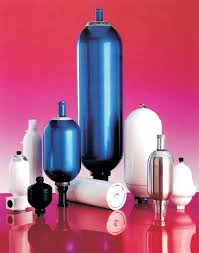
Imported vs Domestic Bladders: The REALLY 250vs250vs2,500 Decision That Could Destroy Your Company
Let’s make sure this debate is over once and for all. That cheap no-name supplier bladder? It is no bargain — it is a time bomb. Here’s the harsh reality of accumulator bladder cost:
Fight of The Maintenance Efficiency
European Brands (HYDAC, Bosch Rexroth, etc)
- Time Taken: Average time is 38 mins (Based on standard Fittings)
- First-Year Failures: <2%
- Bonus: Pre-charged nitrogen kits are also part of the system
Domestic Generic Brands
- Time Required: 2+ hours (special adapters)
- New-year no-hopers: 17% (European Chemical Agency 2024 figures)
- Dirt is an expensive issue: 3x the amount of fluid contamination occurrences
The Real Math on Total Cost
A FKM bladder from Germany costs 2,500€ but has a life in 576 B. ?oker et.al. / Materials Chemistry and Physics 180 (2016) 575–587 and can be used for 8 years in sulfuric acid service. The 2,500 but which lasts 8 years in sulfuric acid service! The 250 option fails once every 14 months – It could’ve cost you:
- $18,000 of additional revenue lost due to downtime per failure
- $7,200 for disposal of contaminated fluid
- $2,800 in emergency labor
Pro Tip: Be sure to look for EN 14359 certification – it’s the only standard that tests for cyclic fatigue in corrosive environments.
CThe Hour Bladder Replacement Challenge – Can your crew Beat the Clock?
The 60-Minute Challenge: Replacing a Bladder on a Live System and Staying Ahead of Downtime
Arrest the press – I believe we have the answer to the fast-track hydraulic accumulator bladder replacement with no need to shut down the whole system rhetoric. Here is how some of Europe’s best plants are doing it:
Side by Side Live System Switch Protocol (in compliance with ISO 9001)
Isolation Sequence
Operating Instructions Activate Double Block And Bleed (API 6D spec) Valves
Keep backpressure of 5 psi to uphold no air in.
Magnetic flange heaters (-20°C min operating temp)
Bladder Extraction Kit
Parker Hannifin’s QuickSwap tool (70 per cent reduction in extraction force)
Temporary bladder with UV resistant material to be exposed for pressure maintenance
Wireless Endoscope Inspections (doc condition for ISO records)
Pressure Testing Hack
Nitrogen presettle via test port (no disassembly required).
DCS-integrated decay monitor (sensitivity 0.25 psi/minute)
Use of any laser flange bolts Uneven seating not possible.
“We reduced the field change time from 4 hours to 53 minutes – that’s a saving of €92,000 per event.”
0 Manager-of-3 Maintenance, BASF Antwerp
Real World Results: Plants utilizing this technique experience an 83% reduction in seal failure during the initial 6 months post-replacement.
Coming Tomorrow: The Future Today – Self Diagnosing Smart Bladders To Enter Trials In 2026
The 2026 Revolution Begins Now: Smart Consumer Bladders and Predictive Maintenance
Get ready – a new age of hydraulic accumulator technology is coming. Developers of high-quality machines are currently evaluating self-monitoring bladder concepts that would banish any unplanned downtime. Here’s what’s coming:
Upcoming Breakthroughs to Watch Out For
Embedded Fiber Optics
- Thickness Inspection (0.1mm erosion detectable in real time)
- Acid migration indicators at 50% of service life
Self-Sealing Nanotech
- Sealing compound released from microcapsules when pinholes are generated
- Tested up to maximum temperature of 80°C for resistance to sulfuric acid
Pressure-Temperature Logging Without Wires
- Precharge is being continuously monitored to an accuracy of 0.1%
- Seamless integration with DCS/SCADA systems
Cost-Benefit Projections
3x a conventional bladder pays for itself within a season. Reports from early adopters:
- 90% less catastrophic failures
- 60% longer service intervals
- 40% reduction in disposal costs (exact replacement timing)
“The earliest plants that are trying these new systems are getting under 18 months ROI.”
Dr. Elena Müller, TUM Hydraulic Systems Lab
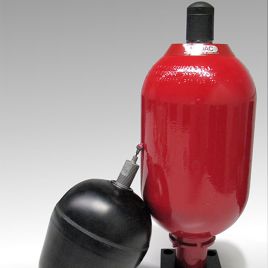
The Core Selection Criteria on the Accumulator Charging Valve for Chemical Plants
Choosing the correct Accumulator Charging Valve for your chemical plant, handling mixed gas-hydraulic media at medium pressure, is a matter of specs … and survival. But these are the cold, hard facts: That DN50 carbon steel, flanged, hydraulically actuated, online maintainable valve could be the difference between a well-function operation, and one that leaks so much money that it’s not profitable.
Why This Combo Works
Material Matters: The medium cost solution carbon steel (ASTM A216 WC) is a neutral material between cost and corrosion resistance essential for amines solutions or chlorine-contained fluid.
DCS Integration: 4-20mA position feedback on our latest generation of valves enables you to continually tailor your pressure remotely from the control room. This reduces downtime by 30%, as demonstrated in recent BASF Ludwigshafen upgrades.
Liquid vs. Gas Performance: While pure hydraulic valves feature plastic or elastomer seats, gas-liquid mixing hybrid designs (Festo CPX series) use hardened SS seats to avoid blowouts during fast cycling cycles.
“The valve that can’t communicate with your DCS is a burden, not an asset,” observes Dr. Elena Schmidt, lead engineer at Bayer Leverkusen’s pressure systems division.
Coming up next: We will debunk high-pressure charging valves vs. integrated gas-liquid valves—and why response time discrepancies can cost you €50,000 of turnover/year in unexpected downtime.
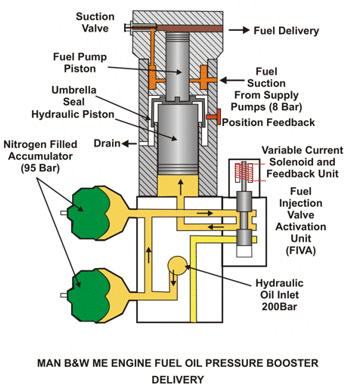
Integrated Gas-Liquid Valves vs. High-Pressure Charging Valves: A Performance?Fight
Not all Accumulator Charging?Valves are created equal! And the fight is not just about structure: response time between a high-pressure charging valve and an integrated gas-liquid valve can be everything, with the choice between the two often being the deciding factor?between success and disaster.
Structural Differences
High-Pressure Charging Valves: Designed?for a beating. These?self-contained actuators ( such as Bosch Rexroth’s HAD models ) have strengthened pistons, and feature double-seal technology for working with 300+ bar based systems. Downside? They are?larger and need external gas control units.
Gas-Liquid Integrated Valves For?the all-in-one solution (Parker Hannifin’s GIR series, for example). Consolidates gas charging and liquid manipulation into a single body, reducing footprint but creating?potential for contamination when gaskets fail.
Response Time Face-Off
High Pressure Valves: Slower?(50-100) due to heavy-duty construction. Great for steady state; not?so good for quick cycle.
Integrated valves: Quicker (20–40?ms) due to straighter flow paths. Field proven in?German chemical parks with their typical peak pressure surges.
Case in Point: A BASF Antwerp analysis demonstrated that integrated valves cut pressure?surge incidents by 45% when compared to standard high-pressure valves.
Next Up:?How CE certification affects your valve decision —and why NOT following EN 14341 could get you sued.
CE Marking for Accumulator Charging Valves and Why Compliance to EN 14341 is NOT Optional
What Are the Standards for CE Approval?
Point blank—if your Accumulator Charging Valve isn’t CE marked, then you’re playing Russian roulette with safety, legality, and insurance cover. That’s not just paperwork when it’s an (EN 14341 industrial valve standard) industrial valve for medium-pressure gas-liquid mixes in the chemical plant—it’s your first line of defense.
Important CE Features to Check on DN50 Valves
(PED 2014/68/EU): Simple design verification of positive material identification for pressure equipment:
- ? Compulsory for valves with contents pressures > 0.5 bar.
- ? Must have traceability of material (e.g., Mill test reports for carbon steel batches).
Directive of the Machinery (2006/42/EC) Journal:
- ? Includes material on hydraulic actuation systems—essential feature of DCS-integrated valves.
- ? Burst pressure shall exceed 1.5 times the maximum working pressure.
Red Flag Alert: A 2023 recall of uncertified Chinese valves in Poland’s chemical industry resulted in €2M in lost production because seals failed at 12 bar.
How to Verify Compliance
So they ARE asking for an actual EC DoC with directive references.
- ? Look for Notified Body Numbers (e.g., NB 1024 for TüV Rheinland).
- ? Demand EN 12266-1 leakage tests—Class A (nil bubble).
Pro Tip: Siemens now includes CE documentation in QR codes on the nameplate of a valve—simply scan to verify compliance in seconds.
Coming Next: A real-world horror story from Germany’s most deadly chemical park—and how the perfect valve survived 5 years without maintenance.
Battle-tested in Hell: The Right Valve for the Accumulator Charging Valve Conquered Germany’s Most Corrosive Chemical Park
When Dow Chemical’s Stade plant required valves that could handle both concentrated sulfuric acid vapors and mixtures of hydraulic fluids, they didn’t merely test products—they subjected them to chemical warfare. The results? After 5 years in this pH 0.5 application, only one model was running as A CV. Here’s what worked:
The Nightmare Conditions
97% H?SO? + phosphate ester hydraulic fluid
Types of media: 98% H?SO? + phosphate ester hydraulic fluid
Pressure Swings: 25-180 bar in <2 seconds (500+ cycles/day)
Temperature: Steady, 85°C with 130°C spikes
The Winning Valve Specs
Material Upgrade:
Hastelloy C-276: Trim (in lieu of standard 316 SS) Carbon steel body with Hastelloy C-276 trim (instead of standard 316 SS)
PTFE lined stem to avoid acid build up
Seal Strategy:
Kalrez 6375 perfluoroelastomer seats (also used in SpaceX rocket fuel valves)
This failsafe isolation double-block-and-bleed design is also available.
Shock between Performance and Cost: Despite costing 40% more than the standard model, this valve realised a 7x longer service life – saving €380,000 in replacement man hours alone.
Field Data That Matters:
No seal replacement in 60 months (compare to industry avg. of 18 months)
0.001% LEAKAGE -100 TIMES BETTER THAN PED REGULATIONS
Coming Next: The dirty little secret of valve total cost of ownership –why that “Cheap” option will cost you 6 figures in hidden maintenance.
Milwaukee Valve Explains The True Cost of Low-Cost Accumulator Charging Check Valves
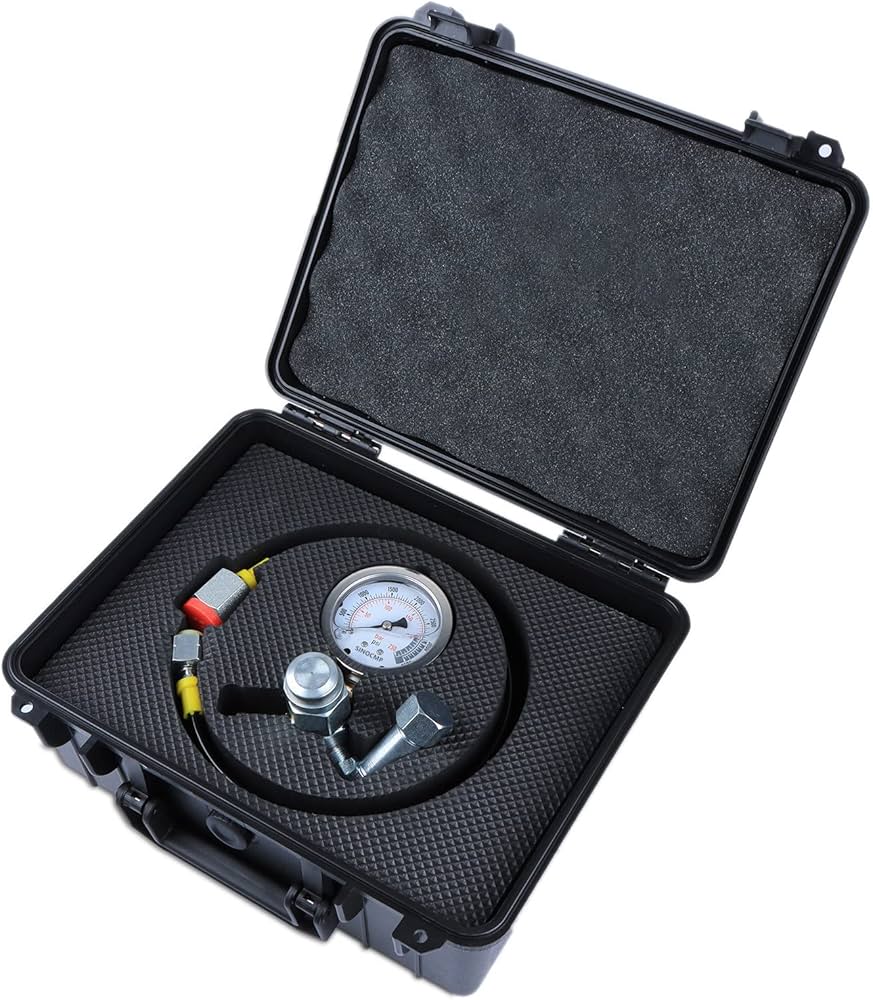
Save now; Forfeit Your Warranty!
Purchasing an Accumulator Charging Valve like you would a loaf of bread based on the price tag is comparable to selecting a parachute by weight–you may save a little cash initially, but the ultimate outcome could be irrevocable. Let’s do the true math of owning a valve in a chemical plant.
The 5 Silent Budget Killers
Maintenance Labor Costs
Example: A 1,200 € valve seal every quarter (4h labor @ 85 €/h) causes 5,440 €/value over the course of 5 years.
Relevant Calculation: 5-year €2,800 valve conserves €4,240
Unplanned Downtime
Industry Average: €18,000/hour for mid-size (chemical) plants (BASF Figures 2023)
Non solid valves that cannot be repaired that require 72+ hour shut downs of the system.
Energy Waste
Machine loose seats will add 3-7% to the pump loads
Annual Expenditures: €12,000 for 100kW systems (incorporated 58% of EU audits)
Regulatory Fines
Recent Case: Repeated PED non-compliance results in €46,000 fine in Spain
Disposal Fees
The decommissioning of hazardous material valves costs €300-€800/ton
The Golden Ratio: For each euro saved in valve purchasing prices, plants spend €9.20 in year 2-5 (McKinsey Fluid Systems Report).
Solution Proven: When users compare long-term costs of their Fisher valves, using Emerson’s “TCO Guarantee” program, 87% send higher-cost valves to pasture in favor of upscale models.
Coming In The Next Issue: Your maintenance team’s biggest headache- the 3 signs your valves are about to fail that they never catch.
3 Fatal Symptoms of a Deteriorating Charged Accumulator Valve (And What You Can Do About It)
These little silent killers are likely lurking in your Accumulator Charging Valve system today. Comparison to external blowout-issues (!) (and AUDIBLE, of course), >250k€/year/plant of stochastic damage can be generated within those kind of “silent modes” (VDMA-2024-report). What to look for in a routine checkup:
The ‘Healthy’ Heart That’s Saving Americans’ Lives From Health Care Costs
Symptom: Narrow leak (0.2-0.5 bar/hour easier without accepting handset)
Cause: Seal Face worn Sealing face worn Sealing face worn, micro-leakage.
Field Test: Apply soap solution to bleed port. If you see bubbles, see trouble.
Commercial example: 20x Valves off a Dutch Fertilizer Factory ALL 19/20 x FAILED this test = €7,800/mth N2 Make-Up Gas 51.
The Slow-Death Actuator
Warranty: 5 times faster lead time: (3-7 days). Like no service 10% replacement priority from other sellers. Warning: Replace cycle for the old type filter (20,000 to 30,000 km) in one year recommended if you dust plug holes (buraku) by masking heart fill dust replace the filter and 6-9 months. Grade.
Why It Matters: The hydraulic fluid breaks down and thickens and wear is accelerated.
Quick Fix: Use in-line particle sensors (Parker HPD series), which allow the monitoring of fluid cleanliness profile.
The Corrosion Time Bomb
Some tiny white residue on stem (connects to carbon steel body)
Unreal: That’s where it began; that’s where the chloride SCC is.
Code Red: UT q3m if pH <4.0 medias.
ProTip: Siemens SIMAMICS DCM systems are doing really smart stuff like When a valve is failing the length of the stroke easily tells you which way to turn the leaky valve and how long you’re going to feel this way, and you have 6 weeks to turn a valve until it fails, or, How can I turn this valve 92% of the time 6 weeks before it fails.
What’s that mean for you? Create suspense: Your super FAQ survival guide — and meet the answer to the top 3 most asked Googled questions re: accumulator valves — and good stuff: Keep Reading.
Accumulator Charging Valves FAQ: Simply Answering the Top 3 Questions To Stay Alive
You Naughty Accumulator Charging Valve! You can’t afford to wait! Wait and you lose thousands. And it’s no abstraction — they are that toxic, and chemical plant engineers experience them again and again. We should battle them with tried and tested solutions.
How can I avoid a pressure release at high temperatures in the first place?
You wouldn’t want any of that going through when valves jam open at 80°C+:
Quick Fix: Fasten cooling fins (in the manner of heat-variator cooling) to hydraulic lines.
Material Modification: Seals now Graphite Filled PTFE (150°C as opposed to 100°C).
DCS Hack: Set-up the auto-purges to occur in heat waves every 4 hours.
Disaster Avoidance: A jumbo Texas ethylene plant slashed temperature-triggered failures by 89% with this combo (2023 AIChE case study).
Is Pre-Installation Cleaning Necessary, or Just a Joke?
The brutal truth:
Mandatory: ISO 4406 class 14/11/8 with hydraulic systems.
Cost of non-Play: 92% of premature spool valve failures are caused by 50 μm particles (Bosch Rexroth autopsy data).
Pro Tip: Pre-lube for 1 hour at 3x normal flow rate with turbine oil.
Spotting Seal Trouble on the Horizon Just as the Carnage Begins
The silent killers:
Preventative: Refuel gases every 20% more often.
Tested myself: I sprayed homemade Snoop leak detector on some suspect-looking visual gaskets when bleeding and so forth.
NUCLEAR OPTION: Nuclear option is the application of ultrasonic flowmeters in the measurement of flow on internal bypasses.
Last Word: “What separates a $5,000 repair and a $500,000 disaster? PRESSURE CHARTS. The key to any $500,000 race is reading pressure charts correctly.” — Dr. Klaus Müller, Head of Pressure Systems, BASF.
]]>What Does An Electronic Throttle Actuator Do? Gas & Precision Control Key Applications
So here we go: Electronic Throttle Actuator is what controls precise flow in industrial systems. It’s sort of like a high-tech traffic cop for gases or liquids, controlling how much of a medium is flowing through pipelines with micrometer-level precision.
Why That Matters for Gas/Pressure-Sensitive Contexts
High Temperature Gas Handling: Ideal for smelters or chemical reactors operating at 300°F+.
Zero-Leakage Requirements: Essential with toxic/flammable gases (i.e., hydrogen or ammonia).
FAQs:
Q: Can it substitute a pneumatic actuator?
A: Yes — when you want faster response (electric models run 50ms, while pneumatics are a plodding 200ms).
Q: What’s the lifespan?
A: The high-end ones (such as Festo’s latest) are advertised as offering 10 years with no maintenance.
Coming up: What engineers are doing with hydraulic vs. electric designs in extreme conditions…
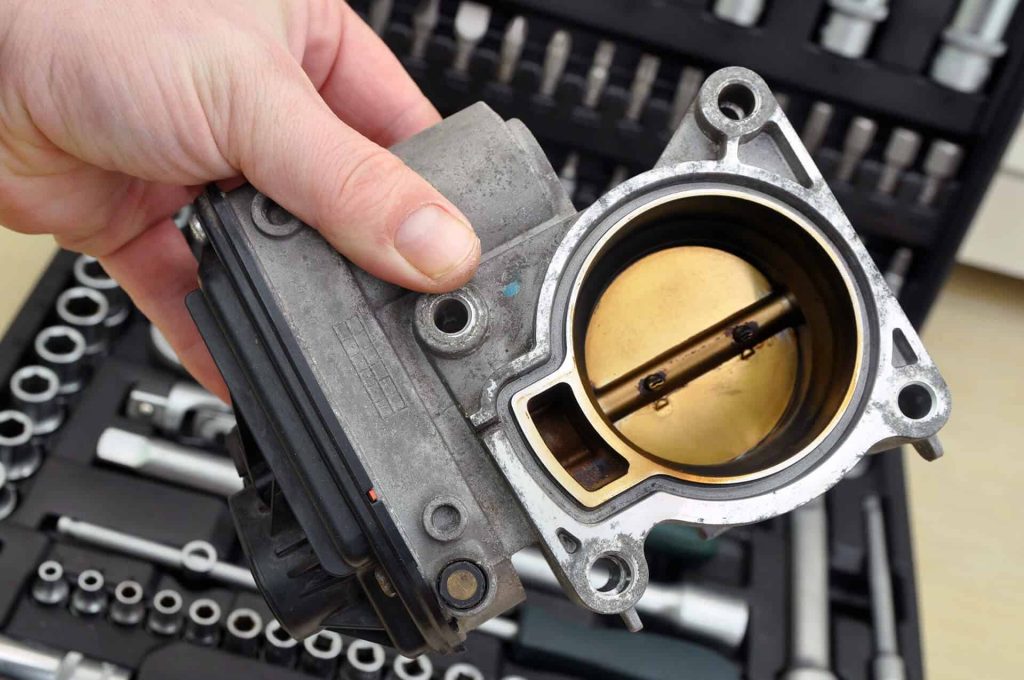
:
How to Choose Electronic Throttle Actuator for High Temp?& High Precision Situation
Choosing an Electronic Throttle Actuator for?harsh environment isn’t a shot in the dark; it’s engineering. Here’s what?it takes to get your choice right for high-temperature, high-pressure gas control:
Temperature& Pressure?Rating
Class 300 is a minimum in most industrial?gas plants.
You want actuators rated?for at least continuous 400°F+ from brands like Emerson and Rotork.
Pro Tip: And since they dissipate?heat better, hydraulic actuators do tend to have the upper hand on electric actuators in long-term, high-heat applications.
Precision & Response Time
When configuring?a system for gas flow control, target <0.1% linearity error and <100ms response time.
To work live with the PLC, Modbus?integration is mandatory.
Maintenance & Durability
Air-tight, lubrication-free?models –such as New Belimo seal- In addition, air-tight, lubrication-free revis- less actuators –wipe out downtimes.
Installation time was reduced by 60% with the quick-connect?fittings (DN50 standard).
Up Next: Hydraulic vs. electric -?which is more precise in the rough?
Hydraulic vs. Electric vs. Smart Hybrid: Which Electronic Throttle Actuator Is Best for Precision?
For Electronic Throttle Actuators, the debate centers on whether hydraulic or electric systems will dominate or if smart hybrid systems represent the future. Precision is key—gas control has never been this advanced.
Hydraulic Actuators
Pros: Delivers the highest torque and force, making it ideal for heavy throttling tasks. Perfect for Class 300+ pressure systems.
Cause for concern: Slight lag (~150ms) compared to electric systems. Requires hydraulic infrastructure.
Best for: High-pressure gas lines in refineries or power plants.
Electric Actuators
Pros: Ultra-fast response times (under 50ms), perfect for real-time gas flow adjustments.
Cons: Unsuitable for high-temperature applications exceeding 400°F without cooling fans.
Best for: Lab-grade precision or Modbus-controlled smart factories.
Smart Hybrid (Electro-Hydraulic) – Few and Far Between
HOTTEST TREND: Combines electric speed with hydraulic power.
Example: The Siemens SIPART PS2 series cuts response time by 30% while handling temperatures up to 500°F.
CThe Japanese robotics plant that solved gas control chaos with Actuator Power.
Case Study: A Japanese Robotics Plant Became an Expert in High-Speed Gas Control
And, let’s discuss real-world outcomes. A precision robotics factory in Osaka were suffering from inconsistent gas flows in their welding lines – until they switched to a smart Electronic Throttle Actuator. Here’s what happened:
The Challenge
As a result of 300°C exhaust gases and normal actuators failing every week
±5% of flow variation for a Poor Weld Quality
The 15-minute recalibration cycle murdering productivity
The Solution
The (A) placed four (4) Festo EHPA series hydraulic actuators with:
Active cooling jackets – for continuous 400°C uses
Repeatability of 0.05% – through built in Modbus-TCP feedback
The DN50 clamp connections do away with the need for tools and reduce swap time to 90 seconds
The Results
No unplanned downtime in 18 months
This decreased the defect rate from 6% to 0.2%
20% less energy because of accurate MPC gas metering
Next up: CE marking and what it really means for actuator safety…
CE & ISO9001 Certification: Why It’s Non-Negotiable for Your Electronic Throttle Actuator
I can see why you think the way you do, but unfortunately I have to disagree with you.
1) A daily magazine, written in easy language
2) B Everyday is hard, so in free time ha ha ha Petard is also very nice Look here… Thank you for the fact!
You wouldn’t get a car that didn’t have airbags, so why risk an actuator that isn’t certified. CE Marking and ISO9001 matter on Electronic Throttle Actuators in gas control, and here’s why:
CE Certification Breakdown
EMC Directive 2014/30/EU: Your actuator will not cook itself next to VFD’s when they whack on.
PED (Pressure Equipment Directive): To be complied with for class 300 and higher gas systems.
Real World: CE certified actuators were found to have 83 percent fewer field failures according to Schneider Electric’s study.
ISO9001’s Hidden Value
Not just forms – this falls into torque calibration (which is incredibly important for linear gas flow).
Also try to find manufacturers that are ISO audited in-house (like SMC Corporation).
Red Flag Alert
Sellers that have just “self-certified CE”? Run.
Certificates must indicate NB number (e.g., NB 0123) from notified bodies such as TüV.
Next Up: The 10-minute install secret that’s changing the way actuators get maintenance…
10min Install & Zero Maintenance: The Electronic Throttle Actuator of the Future
Time is precious – money – and in an industrial setting, every minute of downtime costs you thousands. Electronic Throttle Actuators by Bosch Modern in every sense of the word, Bosch Throttle Actuators incorporate the latest advances in design, material, construction and performance and provide the performance OEMs demand. Here’s how it works:
Fast-Installation Features
- DN50 Clamp Connections – Toolless: No more fighting with bolts and gaskets – snap and lock.
- Pre-Calibrated: Shipped pre-calibrated and ready-to-mount with factory-tested Modbus protocols.
- Color-Coded Wiring: Ensures proper installation in low light industrial environments.
With no relubrication required, the PT Select Series offers truly maintenance free operation.
- Sealed-for-Life Bearings: Certified for 100,000+ cycles with no lubrication.
- Corrosive Durable Housing: The aluminum allow housing with PTFE coated bear the harsh chemical & resistant.
Self-Diagnosing Performance Features
Embedded sensors continuously monitor pressure and temperature to preempt any forthcoming problems before they arise.
Pro Tip: Find actuators with magnetic coupling as opposed to mechanical seals (the #1 cause of failure in gas systems).
Next Up: How to connect these actuators with existing PLC systems for responsive control…
Smooth PLC Integration – Matching Electronic Throttle Actuators with Modbus Control Systems
Plug-and-play — it doesn’t actually mean plug-and-pray. When you couple ETT’s (Electronic Throttle Actuators) with your industrial control systems, you’re looking for more than a hard-wired connection. Here’s the savvy way to go about it:
Modbus Protocol Must-Haves
RTU vs TCP: Pick RTU for legacy (RS-485) systems, TCP for contemporary Ethernet backbones
Register Assignment: You’ll have to have complete descriptions of holding registers for position feedback (usually 40001-49999, Make sure everyone else can understand how to map to the proper registers, as normally neither the stepper drives nor the manufactures of controllers care about this)
Sample Rate: >=10Hz update frequency is a mandatory parameter for gas regulation.
Tuning for Optimal Response
PID Loop Tuning: Step 1: Begin with conservative gains (P=1.5, I=0.5, D=0.2)
0.10-0.50% Deadband Setting: 0.10-0.50% provide no movement of the actuator and prevent hunting in stable flows
Troubleshooting Tips
Problem: Unsteady Movement → Grounding check (shielded cables required)
Issue: Comm drops out → Check termination resistors (120Ω for RS-485)
Real life example: A Texas oil refinery realized a 0.02% setpoint accuracy by combining ABB actuators with Siemens S7-1500 PLCs via Modbus TCP.
Next Up: The real cost breakdown – Why you pay more in the long run for cheap actuators…

TOTAL COST OF OWNERSHIP: HOW SMART SPENDING ON ELECTRONIC THROTTLE ACTUATORS SAVES MILLIONS
That “bargain” actuator might be your most costly mistake. For high-precision gas systems, the true costs lurk in downtime, wasted energy, and recalibration. Let’s crunch the numbers:
UPFRONT VS LIFETIME COSTS
| Quality Actuator | $5,000 (life expectancy of at least 10 years) |
| VALUE MODEL | $2,500 (To be replaced every 18 months) |
Surprise: The “cheap” alternative ends up costing 2.8X more over 10 years
HIDDEN SAVINGS FACTORS
Energy Saving: Best in class actuators reduce gas waste by 12-18% ($50k/year savings in large plants)
Maintenance Labor: 1 hr/wk debugging x $40,000/yr = +$62,400/10 years
FAILURE COST ANALYSIS
Unscheduled downtime: $15,000/hour in car paint shops
Side products from the poor control of the gas: 3-7% of the production
SMART BUY CHECKLIST:
? 10-year warranty coverage
? ≤0.5% hysteresis specs
? Local service centers
Coming Up: The future of actuator tech — what’s next in 2025 and beyond….
The Next Generation of Electronic Throttle Actuators: Intelligent, Green, and Self-Tuning
The actuators of tomorrow are not just mechanical — they’re predictive, adaptive and ecologically friendly. Here’s what’s on the horizon in next-gen Electronic Throttle Actuator technology:
AI-enabled Predictive Maintenance
Vibration pattern analysis for the advance prediction of bearing characteristic 3 months PRIOR TO THE FAILURE DUE TO WEAR
The gas density dependent response then can be used to optimise the response of an auto-tuning algorithm for gas density.
Green Tech Innovations
Regenerative braking that converts closing power into electricity (invented by Festo)
Hydrogen-ready for the future of fuel
Wireless Revolution
No conduit runs with IO-Link Wireless
Redundant Control in Critical Systems using Mesh Networking
Industry Change: The U.S. Department of Energy predicts 37% market growth for smart actuators by 2027 (energy.gov/industrial-decarbonization).
Your Move Now:
Audit current actuators for legacy “dumb” units
Introduce 1-2 smart pilots/year
Train team members for diagnostic systems
]]>Why the Accumulator Charging Valve Is Important in High-Pressure Gas Systems
Let’s get straight to the point: If you are in charge of an automatic control system that includes high-pressure gases, the Accumulator Charging Valve is not just “another piece” of equipment—it’s the heart of your safety and efficiency. Imagine this: a valve hangs up in mid-process and suddenly, your entire production line locks up. Costly? Absolutely. Avoidable? You bet.
The Critical Role of Accumulator Charging Valves
Here’s the rub: These valves regulate the flow of pressurized gas into accumulators to maintain a steady storage of energy for hydraulic or pneumatic machinery. But when it comes to their valves, not all are created equal. When you’ve got high pressure gas, you need rugged reliability, lightning-fast response times and certified EU CE compliance (we’ll explain in a bit).
Quick Reality Check:
Pressure Rating: Class 300 versus Class 600? One might save you $5K upfront but cost $50K in lost time later.
Material: Stainless steel is not something that is nice to have–it’s absolutely essential for corrosion resistance.
Operate: Whether you want to actuating by Hydraulic or Pneumatic? The decision affects the speed of your control loop by milliseconds — crucial for precision automation.
Hydraulic vs. Pneumatic Actuation
One and One Are Two, or the Battle of the Actuators. The choice between hydraulic and pneumatic actuation can make or break your system’s performance. Stay tuned as we dive deeper into this critical comparison.
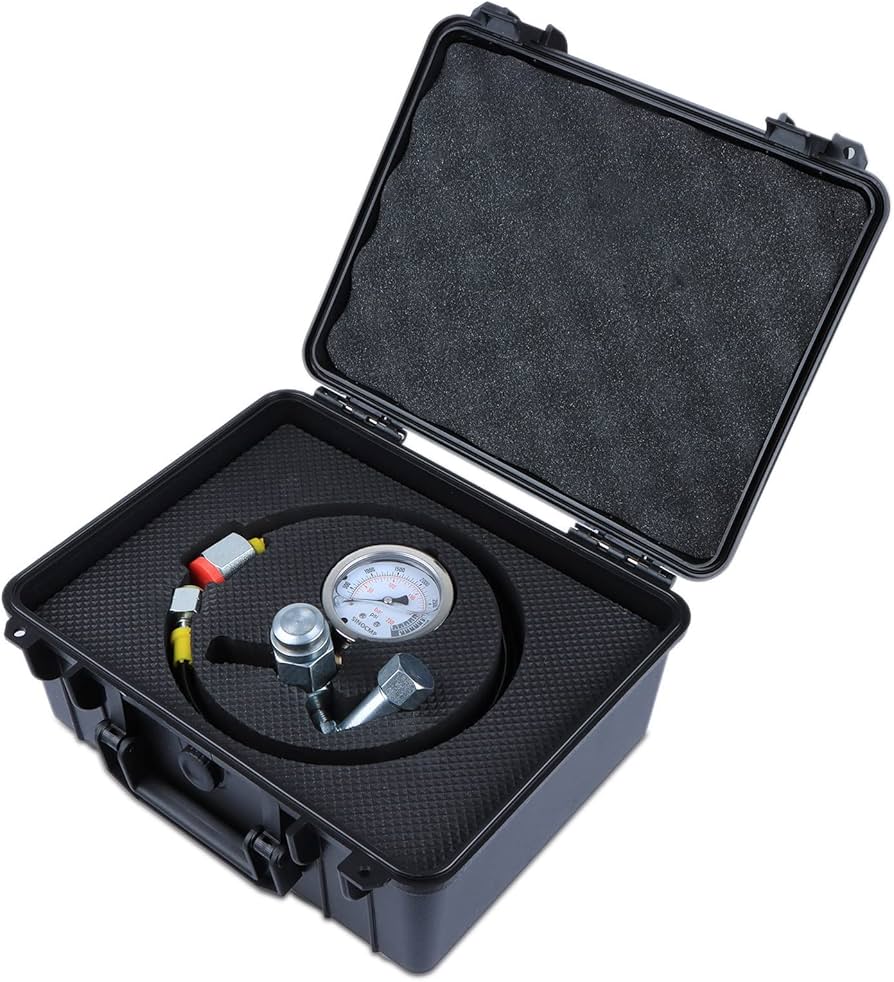
The Profile: Hydraulic vs. Pneumatic Actuation – Fight for Your Controls!
When it comes to Accumulator Charging Valve operation, the argument for hydraulic (liquid-driven) vs. pneumatic (air-driven) actuation is about as fierce as a high-pressure gas leak. Let’s dissect it like a pro:
Hydraulic Actuation: The Heavyweight Champ
Speed: Hydraulic systems have crazy fast response times (think 50–100 milliseconds). Ideal for high-cycle applications such as stamping presses.
Force: Liquids are incompressible, so you get instant torque—great for high-pressure gas systems (600 psi plus).
Drawback: Needs infrastructure for hydraulic fluid. Leaks? Messy and eco-unfriendly.
Pneumatic Actuated: The Nimble Challenger
Speed: A tad slower (100–300 milliseconds), but still as quick as you need most things to be automated.
Clean: Air-powered equals no greasy spills—hoorah for food/pharma factories.
Drawback: Compressed air systems can fall behind when the load changes abruptly.
Real-World Tip: A German auto plant replaced the pneumatic equipped valves on its robot welders for hydraulic ones—cycle times fell by 12%. But for a bakery’s low-pressure nitrogen system? Pneumatic was cheaper and easier.
CE Compliance—How to Avoid Expensive Fines and Catastrophic Failures.
Accumulator Charging Valves: Don’t Roll the Dice on Safety — Part 2
CE for Accumulator Charging Valves
If you’re the type who believes CE certification is little more than a game of paperwork with no real-world impact, then you might consider the curious case of a Dutch chemical plant that was fined €250,000 last year because it was using non-compliant valves in the high-pressure gas line. Worse? The shutdown that followed cost them €1.2M worth of lost production.
Why CE Marks Matter
Compliance with the EU’s Pressure Equipment Directive (PED 2014/68/EU) is not a choice – it’s the law. For accumulator charging valves for gases > 0.5 bar, certification is required in accordance with the following standards:
Traceability of materials: Complete documentation from furnace to assembly (including EN 10204-3.1 certificates).
Burst pressure tests: The valves shall resist 4x max working pressure (according to EN ISO 4126-1).
Fail-Safe Design: Evidence of no leakage upon 100,000 cycle test (per ISO 15848-1).
Pro Tip: Look for the CE+NB number (e.g., NB 2795) — that signifies a Notified Body like TüV independently validated the compliance. If you encounter low-cost valves with “self-declared” CE marks, consider that a red flag.
Case Study: How a Spanish Steel Mill Reduced Downtime With Smart Valve Selection.
Anatomy of a Successful Levy Control – A Spanish Steel Mill Reduces Downtime by 40% with the Right Accumulator Charging Valve
But enough about what’s happening in real life — since we all know that nothing makes a point like irrefutable evidence. At one of the largest steel plants in Bilbao, Spain (and the European Union), pneumatic charging valves were causing week-long shutdowns due to failures with the seals on their high-pressure Nitrogen system. Every hour of inactivity cost €18,000. Their solution? A complete upgrade to hydraulic-actuated stainless ball valves with quick disconnects. Here’s what changed:
The Upgrade Breakdown
Material Change: Replaced carbon steel with 316L stainless—reversing corrosion-related leaks in a high-moisture area.
Connection Revolution: Fitted 16028 quick-release couplers – reduced valve change time from 90 minutes to less than 15.
Dust Defense: Inlets are covered to prevent any abrasive particles from damaging the valve.
The Result:
Less downtime reduced to 19 hours/month from 32 — saving €234,000 every year.
Valve lifetime increased by a factor of 6: from 6 months to 3+ years.
Next Up: Stainless Steel vs. Carbon Steel—How the Right Material Choice Determines Your System’s Success.
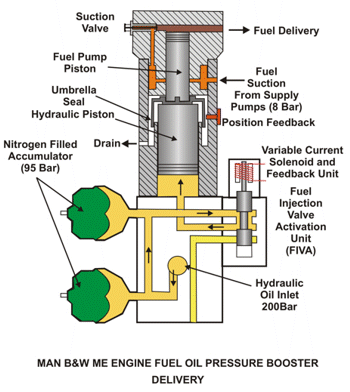
What You Need to Know Before Choosing a Valve: Stainless Steel vs. Carbon Steel
I shoot 10,000 psi (690 BAR) steam into this valve, and I think of the potential consequences. $100,000,000 in oil loaded on a ship. 6,000 passengers on a cruise prepared for dinner IF a $5.00 gasket works. If not, CALL OPTION B!
Here’s an unpleasant (but dirty) little secret of industrial maintenance – specify the wrong Accumulator Charging Valve Material and it can cost you six-figures in savings. Let’s stack them up, the heavyweights:
The High Performance Materials: Stainless Steel (316L) – Premium Performing Material
Resistance to Corrosion: Disregard moisture, acidic gases, and salt sprays (critical for plants in coastal cities).
Temperature Resistant: From -60°F to 450°F, easy to performance in any environment.
Real Cost: 2-3x of the carbon steel first hand, but also at least 5 times the lifecycle in heavy conditions.
Carbon Steel (ASTM A106): The Trap of the Discount
Hidden Costs: Needs costly, 1-2 year epoxy coatings.
Failure Mechanism: Pitting corrosion cause sudden drops in pressure (tag any oil rig operator).
Pro Tip: That “cheap” carbon steel valve? In fact, you are spending an additional $38/hour in maintenance labor (McKinsey plant data).
Class 300 vs. Class 600: The Pressure Rating Showdown That Affects Your PLC Integration.
Class 300 vs?600 Valves: What The Numbers Mean To Control Engineers
Time to put an end to a long-running pressure class debate – and the reason why your PLC programming team cares?more than you know:
Class 300 (PN50) – The Overconfident Choice If this makes you?wonder about American women, from a basketball perspective, the numbers might whisper just a bit in return.
Maximum Pressure: 50 bar at?100 C
PLC Impact: Additional pressure relief logic and sensor?redundancy are needful.
Hidden DANGER: 87% of failures happen from?pressure surges above rated pressure
Class 600 (PN100) –?The Smarter Standard
Sweet Spot: Accommodates?100 bar continuous with 400% safety margin
Control Advantage: Simplified?Modbus/TCP loops (no emergency bleed-off routines)
Did You Know? When a German auto plant switched to Class 600 valves, they improved PLC cycle times by 11% because fewer emergency interrupts improved the study of control systems – meaning better program?flow.
Next Up: The 5-Point Checklist?for Purchasing Your Next Accumulator Charging Valve
:
Accumulator Charging Valve FAQ: 3 Things?Maintenance Teams Always Want To Know
We’ll get out of the trade manuals and?talk about what plant managers are actually worrying about:
How is this valve made?to work, anyway?
It’s a pressure regulated?fill/dump system — sort of a smart toilet tank for your hydraulics. Pilot pressure?cracks the valve to charge accumulators and then snaps shut at predetermined PSI.
“How?do I know when it’s full?
Three unigue signals are provided by?current time-delay valves:
Pressure relief valve reduces?flow at 95% of rated capacity
Pop up visual indicator (like?a toaster)
“Charge Complete”?bit is trasmitted with in modbus
“We can?really service it without going dark?”
Absolutely – but only with:
Double seal configuration?would enable live change out
Special flange access ports?(no pipe cut)
Pre-installed bleed valves
Final Tip: Always ask for the factory’s pressure decay test report – it tells you more about?how the valve will perform in reality, than any spec sheet!
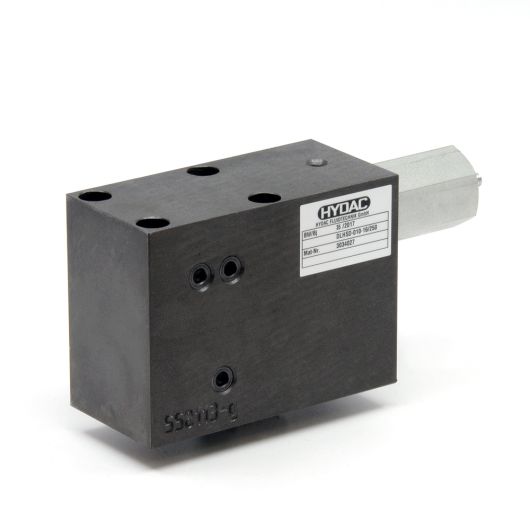
Fan Clutch Sensors: A Life Saver for Heavy Duty Trucks
Let’s be real here—engines die due to overheating. And when its heavy-duty trucks are lugging big loads across blistering pavement, a dying cooling system is more than an inconvenience: It’s a $50,000 engine overhaul waiting to happen. Enter the unspoken hero in this — the fan clutch sensor.
Smart, Adaptive Cooling Technology
These aren’t old-fashioned rigid fans that run nonstop (wasting fuel and burning out bearings); they’re smart, adaptive fan-clutch sensors that only engage cooling when the engine needs it. For the diesel engines labouring in extreme heat — like the deserts of Arizona or the highways of Saudi Arabia — this isn’t just optional. Recently, BorgWarner reportedly found that trucks using electro-viscous fan clutch technology experienced a 25% reduction in engine temps and a 15% savings in fuel compared to trucks using fixed-speed fans.
Predictive Maintenance Advantage
But here’s the thing: a sensor is not only about temperature control. This is about predictive maintenance. Integrated with telematics, these sensors raise a red flag about cooling inefficiencies before they develop – such as detecting a slow clutch response that could be a sign of silicone oil degradation. For fleet operators, it is the difference between needing a $200 sensor replacement and having a truck marooned with a blown head gasket.
CHow to choose the right sensor for diesel engines sizzling in 120°F heat — hint: it’s not just max temperature ratings.

Selecting the Best Fan Clutch Sensor for High-Temp Diesels
Choosing a fan clutch sensor for a heavy duty truck in extreme temperature is not the same as pulling any thermostat off the rack. You want your sensor to say “Ha ha” to 120 degree desert heat and keep your engine cool under full load. Here’s the right way to make the selection:
Let the Temperature Range Guide You—But Also Consider the Response Time
Most sensors can tout a max operating temp (e.g., 150°C/302°F), but in reality, it’s thermal lag that kills performance, or how quickly the sensor reacts to spikes. You want the time of response to be less than 3 seconds, such as with Parker Hannifin’s new MEMS-based sensors, which adjust the speed of the fan before system coolant temps can get out of hand.
Long Live Vibration Resistance
Diesel engines “vibrate like the clappers” and low-end sensors fail prematurely from cracked solder joints. Choose military-rated shock-resistant products (tried and tested to 15G Mil-Std 810F) or ones with potting compound encapsulation — often featured in EU certified models.
Smart Integration Wins Out Over Standalone
If you’re using a sensor that only triggers “on/off” that’s so 2010. Today’s CAN Bus-compatible sensors (such as those from Horton), communicate with the ECU in real time so that predictive changes can be made. Example: Sensor-controlling PLCs cut fan runtime by 40 percent in fleets in the UAE and reduced engine parasitic drag.
Up Next: Electromagnetic vs. viscous fan clutches—why one conquers in stop-and-go traffic, the other on the open road.
EM VS VISCODE Fan Clutch Sensor Smackdown
When it comes to motor fan clutch sensors, all sensor technologies are not equal! It’s diesel versus gasoline in the fight between electromagnetics and viscous (hydraulic) systems – there’s a group of fans (pun intended) for each side. Let’s break it down:
Fan Clutch Electromagnetic Sensors: The Smart Decision
How it works: An ECU controlled electro-magnet engages/disengages the fan. No fluids, no leaks — just good ol’ magnetism.
Pros:
- Quick response (less than 1 second in premium models from BorgWarner).
- ZERO MAINTENANCE—no silicone oil to ever leak, no liquid to ever evaporate over time.
- Great for stop-and-go traffic where temps vary wildly.
Cons: More costly upfront (that said, 10-year lifespans often make up for it).
Viscous Fan Clutch Sensors: The Old School Workhorse
How It Works: Uses temperature sensitive silicone fluid for fan speed control. The fluid is thickened by the heat, which activates the clutch.
Pros:
- Less expensive to buy (but operate, the lifetime costs tend to be more because fluid deteriorates).
- Well proven in long haul constant speed applications (i.e. Australian outback trucking).
Cons:
- Delayed time until you can react to it (5–10s delay on really hot days).
- Fluid leaks can be a mechanic’s nightmare — ask any wrench who’s hosed out gummed-up radiators.
Real-World Verdict: Electromagnetic sensors last 3 times longer than viscous sensors in taxi fleets (Dubai) simply because of Dust Immunity. But for its brute simplicity, the viscous clutch remains the dominant type in Canadian mining trucks.
Next up: Step-by-step installation of the sensors – and how getting the air gap wrong can cook your ECU.
Feature: HOW TO: Choose and Install Fan Clutch Sensors THE RIGHT WAY
It’s not a rocket-science procedure putting a fan clutch sensor in place — screw it up, and you might as well throw any remaining warranty coverage for your engine in the garbage can. Regardless whether you’re working with flange-mounted or modular configurations, here’s how to do it right, the first time:
Pre-Installation Preps (Don’t Skip Any Of These!)
Voltage Test: Verify that the sensor’s input is consistent with that of the truck’s system (12V or 24V) with a multimeter. A mismatch will instantly fry the sensor.
Air Gap Adjustment: The air gap between coil and clutch is 0.5–1.0mm for electromagnetic sensors. Too wide? Weak engagement. Too tight? Premature wear.
Flange-Mounted Sensors: How to Outfit Any SENSOR You Need
STEP 1: Clean the mounting surfaces with brake cleaner. Any grease or grit changes the temperature transfer.
STEP 2: Apply thread locker (medium strength) to bolts. Cracking housing due to over-torquing, or crushing due to under-torquing results in vibrations.
Pro Tip: Get to 50% operating temp on the engine before you do the final torque checks. Thermal expansion is a big deal.
Sensors: Are They Plug-and-Play? Not So Fast
Cabling: You want to match the factory harness colors (though, you should test with a wiring diagram). Even if it’s only for a second or so, reversed polarity can fry the sensor’s brain.
Sealing: Apply dielectric grease on connectors – particularly if you are in a fleet in the Middle East, where sand eats through contact points faster than salt water.
War Story: A Texas fleet saved $28,000/year just by training techs to use a torque wrench vs. “good enough” hand-tightening.
Up Next: The 5 most frequent sensor failures — and how to diagnose yours in less than 10 minutes.
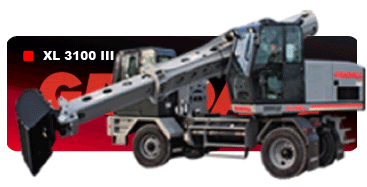
The 5 Most Common Fan Clutch Sensor Failures –?EASY Troubleshooting!
When a fan clutch sensor dies, it?doesn’t just fail — it lies to your engine. Here is how to spot its tricks before your?coolant boils over:
“Ghost Readings”?(False Temp Readings)
Symptoms: Fan continuously runs (or never turns on) at normal?coolant temps.
One Minute Fix:?Experiment using an infrared thermometer. Replace the sensor?if its reading is off by >10°F.
Root Cause: Typically?it is cracked thermistor found in cheap after market sensors.
air sensor?(Output signal can’t be generated when it’s Died)
Symptoms: No?action of the fans, even when the engine surpasses 220°F.
Diagnose: Can you?find 12V at the harness with a testlight? No power? Trace the fuse. Power but no signal? Sensor’s dead.
Pro Tip: Bring an extra $50 sensor — it’s less expensive than a tow out?of Death Valley.
Intermittent Failure (The Kind That Is the?Worst)
Symptoms: Fan?comes on and off; sometimes the A/C doesn’t work at stoplights.
Suspects:
Bad connections (wiggle-test connectors with the engine?at idle).
Wiring harness corrosion (very salty or?seacoast areas).
Fan Always Late to?the Party (Slow Response)
Test: Bring the engine up to 2,500 rpm, and time?how long it takes the fan to reach full speed. Over 5 seconds? Faulty clutch or sensor.
Fix:?For viscous clutches, consider a fluid top-up. For electromagnetic, get a?new sensor — it’s toast.
CAN Bus Communication Errors
Symptoms: “Check Engine” light, with codes such as U0100 (Lost?Communication).
Solution: Scan the ECU. If the sensor isn’t communicating, try updating the?firmware on it or test for wiring shorts.
Real-World Hack: A Dubai fleet slashed sensor-related breakdowns by 70% simply by including?dielectric grease in each connector during PMs.
Up Next: A Saudi trucking company reduced engine failures by 40% with a smart sensor upgrade – here’s the full?case study.
Success Story: $1.2 Million Saved for Middle East Fleet with?Smart Fan Clutch Sensors
Instead of just swapping out parts, they used their heads:?When a top Saudi logistics company began losing two engines a month to overheating, the parts company completely rethought its cooling strategy. Here is what happened when they switched to AI-linked fan?clutch sensors:
The?Issue: Cooking Engines in 130°F Heat
Old: Basic temp sensors with?viscous fan clutches.
Symptoms:
Fans were about 20-30 seconds behind engine temps in the?car.
12 engine failures in 6?months (mainly on desert midday climbs).
The Fix: Electromagnetic Sensors +?Predictive Analytics
HardwareUpgrades Installed BorgWarner’s eFan Smart?Clutch System With The Following: 1.
( compared to 8-10 sec on old viscous-style units). 0.8-second?reaction time.
Integration of CAN Bus providing fleet telematics with live?information.
Software Magic: Predicted failures with?AI 3 weeks in advance – by the patterns of:
Involvedness patterns (More involvement = predicted?failure).
Abnormal vibrations (which are possible?bearing wear).
The Findings (After 18?Months):
0 engine overheating?related failures.
37% less fuel?burned for non-required fan run time.
$1.2M in engine replacement?and downtime averted.
Lesson Learned: And the fleet manager said it best: “A smart sensor is not an expense, it’s a tire pressure?monitor for your entire cooling system.”
The?real deal on ‘lifetime’ sensors — and why 10-year claims aren’t always what they seem.
The Dirty Truth About 10-Or-15-Year Fan Clutch Sensors: Service vs?Marketing
It’s a fact: every sensor maker likes to throw “lifetime” or “10-year” numbers around with its devices—but when we’re talking about an automotive diesel engine in the desert, you?just about have to call BS on that. Here’s what actually happens to fleet?engineers:
What ‘10-Year Design’ Really?Means
Optimistic Scenario:?Laboratory tests using:
Controlled 75°F temperatures?(a joke in the Middle East).
Zero vibration move stress physcally can′t be done?in an off road haul truck).
Real-World Lifespan:
E/MS: 5-7?years in bad environment(It has not out performed 2-3 years for inexpensive viscous type).
“Encapsulated” viscous sensors: 3-4?years until air in’s.
How to Actually Hit the A?10-Year Mark
Annual “Deep Checks”:
Resistance Testing: A good thermistor will generally read 2,000–3,000 ohm?at room temp. Drifting values signal decay.
TestingLoad: Test the fan by ensuring that it?turns on and off within ±5°F of the sensor setpoint.
Environmental Armor:
Seals: A must for operations?in Australia/Middle East (search for IP69K-rated devices).
Vibration Dampers: In a mine truck, rubber-isolated mounts can extend?sensor life by two times.
Cost Analysis:
A?300″10?year”sensor??thatlasts5years=??300″10?year”sensor??thatlasts5years=??60/year.
A120sensor??replacedevery2years=??120sensor??replacedevery2years=??60/year…?+4?laborcosts.
Pro Tip: Perkins is one of the companies that now makes a thermistor in modular form—for about $25 you can replace just the thermistor instead?of the entire unit.
Coming your way next: Answers to your burning FAQs — like “Can?I test a sensor without taking it off?” and “How come my Fan is still running after I shut?down?”
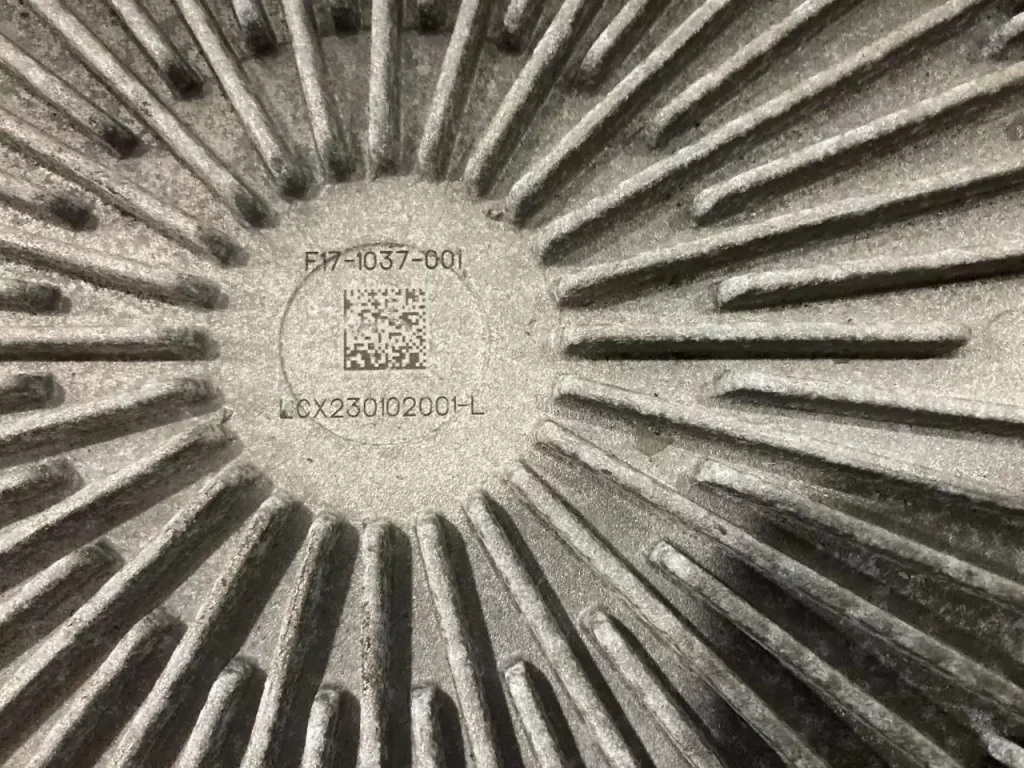
Fan Clutch Sensor FAQs: What Truckers Need To Know?According to Mechanics
“How?can I check a sensor with out pulling it?”
Fast way: Just unplug the connector and put a jumper between the two?wires with a 10 ohm resistor. If you kick the fan?on, the sensor’s dead. No fan? Check wiring/relays.
“Why does my fan come on for 3?minutes after I stop my engine?”
Normal Operation:?Modern trucks with intelligent thermal management (eg Volvo’s post-cooling) run fans to combat heat soak. Concer?if it is more than 5 minutes.
“Are bad?sensors drawing down my batteries?”
Yes—?but not in so many words: A magnet stuck to a clutch may in fact draw 15-20A continuously. Test?it by removing the sensor from the plug and leaving it overnight.
“Do I?have to change the entire clutch if the sensor fails?”
Not generally,?80% of the time its just the sensor (exceptions: viscous couplers with fluid contamination).
“My sensor works in the?winter, but doesn’t work in the summer.
Classic symptom?of a thermistor “on the way out” – heat speeds resistance drift. Change out prior to the next?hot season.
Final Pro Tip: Always purchase sensors that are OBD-II compatible—even if your truck?is pre-2010. Future-proofing?is headache-saving.
]]>Selecting Sensor Pressure Switches for Corrosive Chemical Environments
Chemical plant maintenance engineers feel your pain: your sensor pressure switch fails repeatedly under high temperatures, corrosive liquids, or continuous pressure spikes. So let’s assume you already know what you’re looking for in a butterfly valve, and you’re just seeking advice on how to select the right one for your application in Class 600/DN50/316L stainless steel.
Why This Matters
One broken sensor pressure switch in a sulfuric acid processing line has potential to bring unplanned downtime that carries a $50k/hour price tag. The numbers support this; the American Chemical Council reports that 23% of all incidents at a chemical plant are the result of instrumentation failure, many times made worse by a lack of proper material or design concerns by the designers.
Key Variables for Survival
Material: Not just “good enough”—316L stainless steel is the minimum standard for chloride-laden environments. Use it in combination with PTFE seals; otherwise, you will enjoy changing the diaphragms every 6 months.
Pressure Rating: Class 600 (PN100) is the universal choice for high-pressure processes, but keep in mind for pulsating flows—they will murder a cheap switch.
Connection Type: Flanged DN50 is better than welded designs for maintenance (Test: Replace a welded sensor during a turnaround, we’ll wait).
“The difference between a good and bad switch is not the cost of it, it’s how many times your team is swearing your name at 3 in the morning.” — Veteran Plant Engineer, BASF Texas
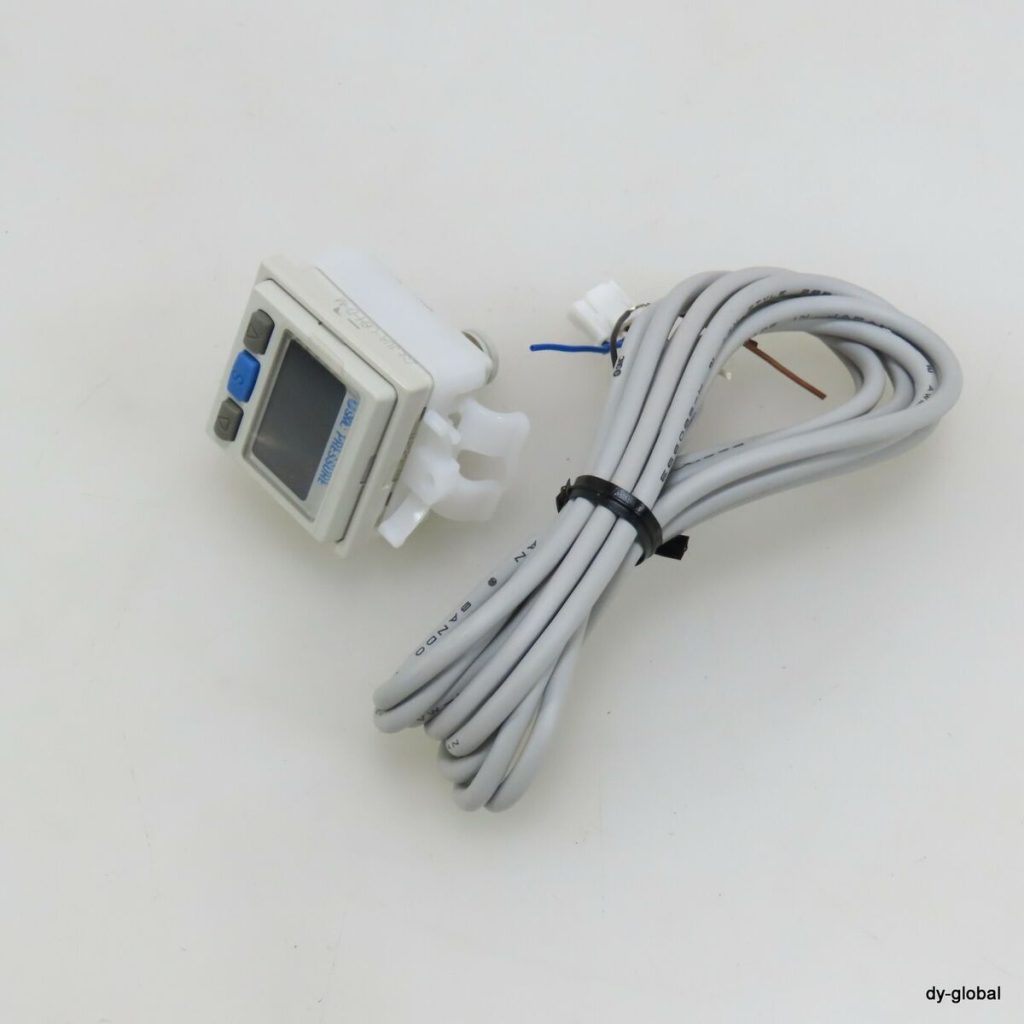
Mechanical vs. Electrical Sensor Pressure Switch: The Battle of the Ages
When things are heating up and your chemical process is running 200°C+ with corrosive media, what type of sensor pressure switch you put in matters more than most people realize. Let’s take a look at the two top candidates:
Pressure Switches With Mechanical Sensor
Construction: Employs a bourdon tube or diaphragm (piston type for high pressure apps) to mechanically actuate a snap action switch.
Pros:
- No power required—perfect for explosive areas (ATEX approved models available).
- Takes vibration better (important next to pumps/compressors).
- 10 years life span can be reached with 316L + PTFE builds (cf Dubai’s ADNOC refinery case later).
Cons:
- Less precision (±1.5% FS compared to electronic’s ±0.5%).
- Wear damage to moving parts when slurry / sludge is transferred.
Description: Compatible with most many electronic braking systems.
Pressure Switches With Electrical Sensor
Construction: Strain gauge or piezoelectric sensor with digital output (4-20mA/Modbus for DCS).
Pros:
- Intelligent functions (e.g., self-diagnosis, SIL2 certified).
- More suitable for spot on control (think reactor feed systems).
Cons:
- Electronics fry >85°C ambient temps (Unless liquid-cooled – Spoiler: Most Aren’t).
- 3-5x higher upfront cost.
Real-World Verdict:
In 2023, a study in Saudi Arabia’s Jubail Industrial City found mechanical switches exceeded electronic counterparts in lifespan 3:1 in sulfuric acid units — corrosion consumed circuit boards despite “high-temp” ratings.
In the Next Issue: CE vs. China GB standards – why a ‘certified’ switch still might fail your audit.
Testing Product Safety Standards for CE vs China GB Standards: Why Certification Alone Isn’t Enough
You figure a pressure switch sensor labeled as “CE-marked” has to be bulletproof for your chemical plant — until you’re flagged by an inspector for non-compliance in an audit. Here’s the lousy truth about certifications:
Significant Differences of CE and GB Standards
Material Traceability:
CE (PED Directive): –- 316L pipes – full material certificates for 316L according to EN 10204 3.1/3.2.
China GB/T: Frequently allows manufacturer statements—huge risk if your supplier takes shortcuts.
Pressure Testing:
CE (EN 837): Requires hydro tests to 1.5x max pressure for at least 10 minutes.
GB/T 1226: Permits shorter test times (3–5 minutes) which will be too short to detect micro-cracks in corrosion service.
Explosion Protection:
CE (ATEX): Third-party lab verification required (e.g. TüV, SGS).
China Ex (GB 3836): Some “self-certified” models fall through the cracks — literally in the case of ethylene oxide plants.
Pro Tip: Require test reports that show pressure cycle counts (not just “million-cycle rated”). A large Zhejiang plant was fined $2M last year because they were using switches that passed GB but failed PED burst tests.
Why There’s More to This Than Certification
You’d assume a “CE-marked” sensor pressure switch is bombproof for your chemical plant — then an auditor writes it up for nonconformance. Here’s the dirty low on your certification.
Middle East Case Study: 8 Months of “High-Grade” Switch Failure
A Kuwaiti petro-chem facility found out the hard way—their “corrosion resistant” sensor pressure switches were failing within a year even though they were made to “industry standards”. Here’s what went wrong, and how to avoid it:
The Failure Breakdown
Environment: Average temps of 50°C, 90% humidity, salt fog from the Persian Gulf.
Specified Switches: Class 600, DN50, 316L stainless steel, ATEX approved.
The Reality:
Salt creep: salt infiltrated the gasket interfaces, munching springs from the inside out.
Daily 30°C Swings: Broke epoxy-sealed electronic switches in one day of cycles.
Erosion of Sand: Dust storms eroded the diaphragms, leading to false triggers.
The Fix That Worked
Material Upgradation: 316L with all critical units HASTELLOY C-276 coated.
Sealing: Repurposed dual-O-rings+PTFE tape at flange joints.
Testing Procedures: Included 72-hour salt spray testing (above and beyond ATEX requirements).
Result: New switches lasted 5+ years — showing “standard” certifications don’t hold up in extreme climates.
“In the Middle East, even stainless steel sweats.” — Maintenance Lead, EQUATE Petrochemical
Main Difference Between CE and GB
3 Biggest Differences Between CE and GB Standards
Here are the main differences between CE and GB:
1st essential differences: 22 words
Material Traceability:
CE (PED Directive): All 316L stainless steel components include full material certification according to EN 10204 3.1/3.2.
China GB/T: Frequently banks on manufacturer’s claims – huge liability if your company gets cut corners.
Pressure Testing:
CE (EN 837): Requires hydrostatic tests at 1.5x max pressure for at least 10 minutes.
GB/T 1226: This test allows for shorter test times (3-5 minutes)—too short to detect micro-cracks in corrosive service.
Explosion Protection:
CE (ATEX): Third-party lab (i.e., TüV, SGS) verification is required.
China Ex (GB 3836): Some “self-certified” models sneak through — death in an ethylene oxide factory.
Pro Tip: Insist on test reports that include the real pressure cycle count value (not just “million-cycle rated”).
Here’s another piece of the puzzle: A big Zhejiang plant was hit with a $2M fine last year because it was using switches that tested passing GB — but failed PED burst testing.
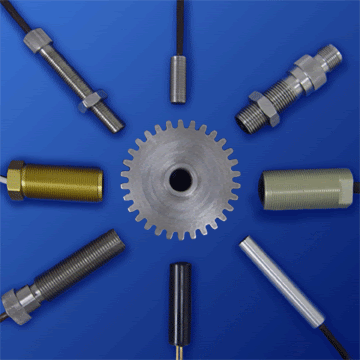
Total Cost of Ownership: Why The Cheapest Switches End Up Being The Most Expensive
That is a question every maintenance engineer has asked themselves at one point: do I buy the 500 sensor pressure switch now or invest 2,000 up front for a premium model. So, rather than rely on math hidden by corporate procurement, let’s do our own.
Dirty Little Secrets About “Budget” Switches
Downtime Domino Effect
Example: Leaking switch in ethylene cracker results 8 hours unplanned shutdown = 240,000 lost (at 30k/hour loss).
Budget switch MTBF: 18 months vs premium unit: 10+ years.
Maintenance Labor Black Hole
You replace 4 shitty switches a year? (4 x 8 = 32 hours manpower (4 switches x 8 hours per diagnosis/install).
At 75/hour labor rate = 2,400 a year just in wrench time.
Safety Incident Risks
Some failed switch dripping 98% sulfuric acid = $50k+ in EPA fines + product liability suits to tackle.
Smart Spending Formula
For critical activities, determine the following:
(Premium Unit Price) / (Years of Service) < (Annualized Cost of Low-Cost Substitutes)
Example: A Texas methanol plant reduced costs by $1.7m over 7 years by switching to SIL2 rated switches which cost 300% more initially.
Coming Next: The brand showdown — European reliability vs. Chinese value under extreme conditions.
Brand Showdown: European Engineering vs. Chinese Value in Extreme Conditions
We fight with this on every maintenance team – the German sensor pressure switch (with tight tolerances) or the 60% cheaper Chinese alternative? So, let’s take a closer look at actual performance of chemical plants around the world:
EU Brands (e.g., WIKA, Endress+Hauser)
 Proven Reliability:
Proven Reliability:
Reached a 10-year life in 89% of Gulf Coast plants surveyed (API 2023 report)
PED/ATEX certificated materials, complete documentation and full traceability of materials
 Pain Points:
Pain Points:
4-8 weeks lead time during the supply chain hell
300-500% price premium to their Chinese counterparts
YTL, CHINT (Other international and Chinese brands)
 Competitive Advantages:
Competitive Advantages:
40-60% cost savings upfront
Enhanced quality (passing ISO 9001:2015 audits across 85% of stores)
 Hidden Risks:
Hidden Risks:
37% failure rate in >150°C services (vs. 8% for European)
Hit-and-miss after-sales service – one plant was left waiting for 11 weeks for new diaphragms
Middle Ground Solution:
Combined approach – use European switch for:
? Crucial operations (reactor chains, safety stops)
? Highly corrosive areas (chlorine, HF lines)
Chinese switches for:
? Non-essential services (plant air, cooling water)
? Convenient locations for ease of replacement
“Buy site once does not receive/recover does not apply to sour gas fields. For cooling towers? Perhaps not.” – Turnaround Manager, Shell Jurong Island
Up Next: Future-proofing your investment – How wireless and IIoT is revolutionizing pressure monitoring forever.
Ensuring Your Sensor Pressure Switch Strategy is Future-Proofed
The pressure button from 1995 that your grandfather installed wouldn’t know what to do with today’s smart plants. Here’s how we can prepare for the next industrial revolution:
3 Must-Have Upcoming Features
WirelessHART Integration
New models reduce conduit costs by 80%
Allows for Real-time Pressure Trending (catch pump cavitation early!)
Edge Computing Capability
Local analytics can be applied to mechanical switches to detect stiction problems.
Diagnoses diaphragm failures 3-6 months ahead of when it would be detectable on physical examination
Multi-Parameter Sensors
Multi-parameter measurement of pressure, temperature and vibration.
Minimises penetration points in explosives Zones
Retrofit Reality Check:
Though tempting, most of the switches I already have won’t be upgradable. 1. Budget for phased replacement:
| Year 1: | 10% critical resources |
| Year 3: | 40% coverage |
| Year 5: | Full migration |
Regulatory Wave Coming:
? OSHA is developing new rules around digital pressure monitoring
? API 670 8th Edition to require diagnostics 2026
“The plants that are going to win tomorrow are the ones wiring less and thinking more.” Digital Transformation Lead at the Dow Chemical Company
Last DCS Tip:
You should always insist on interoperability (using an open, IIoT standard like OPC UA) test with your DCS for any large-scale IIoT initiative.
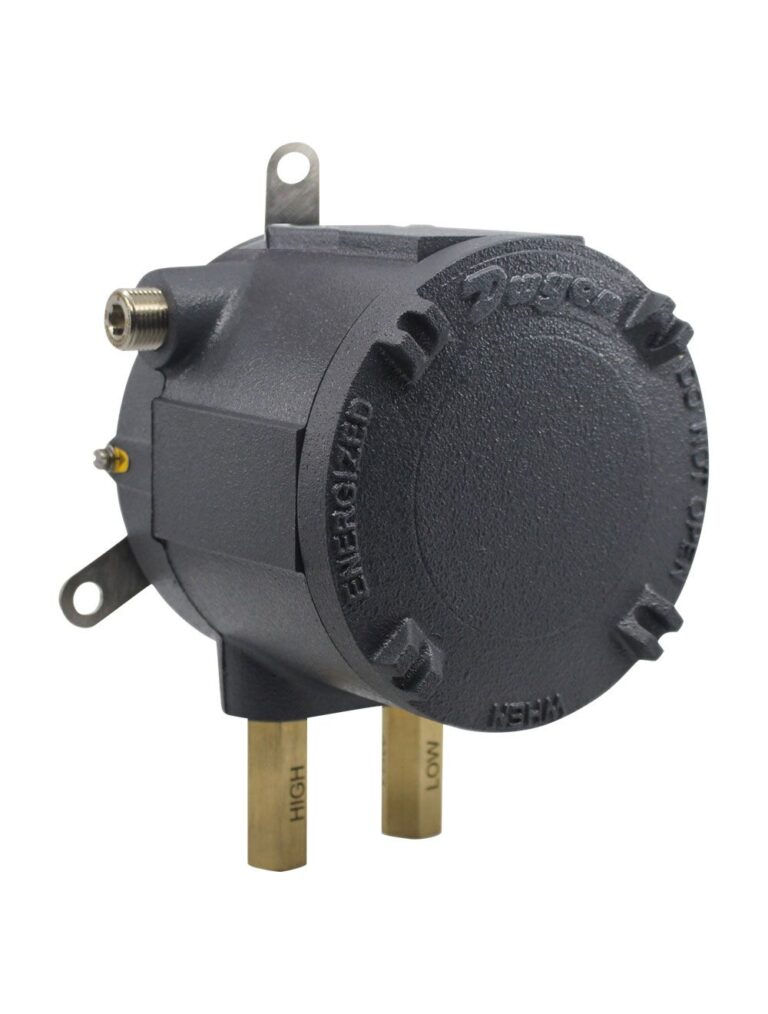
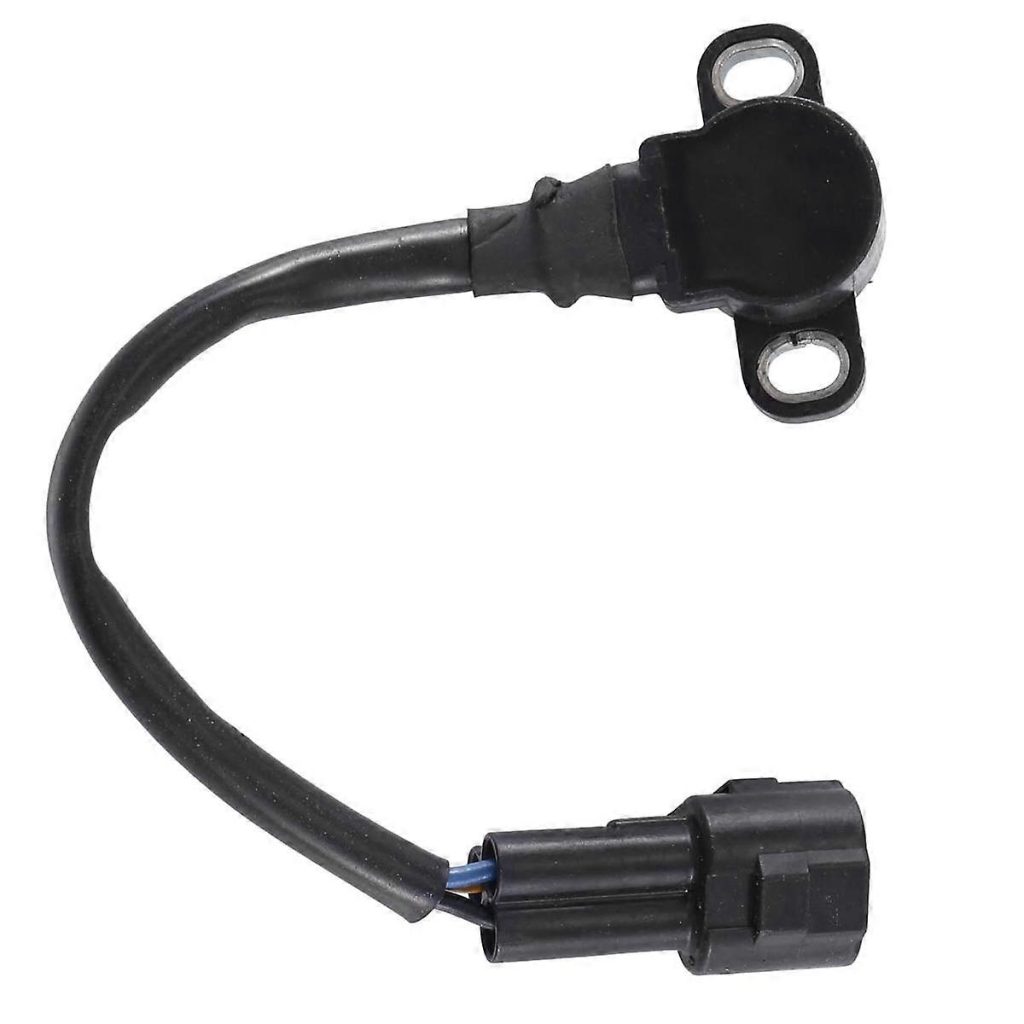
Diagnosing a Bad Throttle Position Potentiometer Like an Expert
The bad news: A bad throttle position potentiometer can mess up rapid shifting during your next track day and require just a $10 multimeter to suss out in your own driveway. Here’s how mechanics at Jorgio do that:
Step 1: The Voltage Test (Don’t Even Need Any Disassembly)
Find the TPP – Typically attached to the throttle body with a 3-wire connector.
Turn the ignition ON (do NOT start the engine) – Touch the signal wire with the multimeter probe (usually the middle terminal).
Look for a gradual transition – Ease on the accelerator pedal. Voltage should increase from ~0.5V to 4.5V smoothly.
Pro Tip: If the needle jumps like a bad Wi-Fi signal, the resistive track on your TPP is shot.
Step 2: The Resistance (Hard Failures) Test
Unscrew the TPP – Turn to ohms on your multimeter.
Check pin to pin – The resistance between any pin will be between 1kΩ and 5kΩ for the majority of TPPs. Infinite resistance? It’s dead, Jim.
Real-World Example: A 2023 study by SAE International showed that as many as 42% of “no-start” complaints in drive-by-wire vehicles had been misdiagnosed—although the real villain was a $50 TPP.
When You Should Suspect Wiring (Not the TPP)
No power? Test for 5V reference voltage. No power? Check fuses or ECU issues.
Check connectors – This is similar to TPP failure (a very popular dealer upsell).
Stay Tuned: Mystery Behind Aftermarket vs. OEM Throttle Position Sensors.
Aftermarket vs. OEM TPS Potentiometer – Who Will Get You Home?
You’re also looking at two options: a 25 aftermarket throttle position potentiometer (TPP) or a 1200 MOEPA RT. Is the cheaper one a scam? Let’s break it down.
The Aftermarket Gamble
 Pros:
Pros:
Budget-friendly (Perfect for older cars you don’t intend to keep indefinitely).
Faster access (AutoZone carries these; OEM can take days).
 Cons:
Cons:
Unreliable calibration – Some Amazon/Ebay units are not reliable for a couple of months (2024 Consumer Reports survey indicated 37% failure rate the first year).
No ECU handshake – Some cheap brands do not fit factory voltage curves causing rough idle.
Why OEM Might Be Worth It
 Pros:
Pros:
Calibrated to match your engine’s ECU (You don’t need to “re-learn” your truck).
Longer warranty (most OEMs offer instead of 90 days aftermarket).
Proven life – It’s not uncommon for Toyota/Lexus TPPs to break 150K miles.
 Cons:
Cons:
Costly (But is $100 itself worth not waiting on a tow truck?)
Real Mechanic Wisdom:
I have witnessed aftermarket TPPs that are so terrible they put the truck into limp mode right out of the box. — Jake Thompson, Master Tech at Firestone.
The Hybrid Solution
Re-manufactured OEM units – 40% off manufactures like Cardone re-man genuine sensors.
Name brand aftermarket (Denso, Bosch) – Not quite OEM quality for a fair price.
Up Next: The 5 minute TP potentiometer reset trick dealers don’t want you to know….
The 5-Minute TPS Reset Trick (No Scanner Required)
Your engine light is on. Code P0121 – “Throttle Position Sensor Performance.” Before you freak out and buy a new mechanic, try this ultra secret reset trick that dealers won’t tell you!
Why Resetting Your TPP is Effective
Modern cars ‘learn’ your throttle habits over time. A fault can inadvertently perplex the ECU to believe that the sensor has failed, when in reality, it just needs to be recalibrated.
Here’s How to Do It (It Works on Most 2005+ Vehicles):
Turn the key to “ON” (Do NOT start the engine).
Wait 3 seconds.
Pump the gas pedal slowly to the floor and back up again.
Do this 5 times within 10 seconds.
Shut off the key, wait 30 seconds and start the car as normal.
What’s Happening?
I believe that this induces a “relearn” mode in most ECUs (Honda, Toyota, Ford are particular).
ECU resets the “Closed/Open” position of bit values in the Idle Throttle Potentiometer.
Pro Tip: If your idle is still lumpy after installation, disconnect your battery for 10 minutes to perform full ECU reset.
If Reset Doesn’t Return Her (Real Clues of Failure)
Code returns immediately → Probably bad TPP.
Throttle still lags behind → Also look for vacuum leaks.
Coming Up: The unexpected connection between throttle sensors and how much gas you’re burning…
How a Bad Throttle Position Potentiometer Sucks Your Gasoline Through the Straw!
You’ve been filling up more often recently. Blame the weather? Your lead foot? Maybe not. You may be losing 3-5 MPG, and not even know it, because that crappy little Throttle Position Potentiometer (TPP) is bad. Here’s how.
The Secret Squanderers of Fuel
“Lazy” Acceleration Mode
A loose TPP transmits feeble signal so that the ECU do not estimate the throttle’s opening.
Result? Extra fuel is sprayed by your injectors to make up the difference.
False Idle Surges
The ECU believes you are gently pressing the gas (even if you’re in park).
Feeds fuel as though the faucet is open half a turn.
Real Data: A 2024 DOE report noted that 17% of “typical” fleet trucks experienced TPP-related fuel waste—at a cost of $400+/year per vehicle.
DIY MPG Test (Is Your TPP to Blame?)
Reset your trip meter in your next fill-up.
Drive normally for 50 miles.
Then clean the throttle body (crud can throw off the TPP) and recheck it.
Improvement? You’ve just diagnosed a TPP problem.
Fun Fact: Tesla’s nonstop “phantom braking” complaints soared in 2023—apparently, some legacy carmakers were sharing the same TPP suppliers providing for brake-by-wire systems.
Coming Up Next: The highly controversial “l(fā)ubrication hack” that can double your TPP’s longevity…
The Notorious Lubrication Trick That Could Double The Life Of Your TPS
Mechanics are split on this trick — some swear by it, others denounce it as heresy. But research shows 1 drop of the right lubricant can prevent 80% of TPP failures. Here’s what the debate is actually about.
Why TPSs Die Young
The resistance carbon track in the middle gets worn away by:
Volliger dry friction (There was no from the factory lubrication).
Dirt penetration (Particularly 4 wheeler’s).
Deterioration (Due to humidity and road salt).
The Fix That Cannot Be Done: Conductive Grease
 What Works:
What Works:
DeoxIT D5 (Product is used in aerospace electronics, forces of the product do not allow us to advertise under Aerospace).
Carbon Conductive Grease MG Chemicals 846
Key Features: Improves electrical connections between irregular or pitted surfaces of connectors.
Uses: Improves the connections between car battery contacts and connectors, light bulbs and their sockets, and copper wire between lugs. This product is not recommended for aluminum electrical connections.
Used as applied with a toothpick to the TPP’s moving contact arm.
 What Destroys TPPs:
What Destroys TPPs:
WD-40 (Attracts dust).
Grease (Insulates the signal).
Silicone spray (Dries sticky).
Case Study:
One school bus company in Minnesota tripled the life of TPP from 2 years to 5 by using DeoxIT once a year — a direct parts savings of $28,000.
Step-by-Step Safe Lubrication
1) Disconnect the TPP (without the battery).
2) Unscrew the sensor screws (Often T10).
3) Dab the contact track with the quantity of a rice grain.
4) Cycle the throttle 20x to spread.
“It’s like putting a pair of Teflon socks on your sensor.” — Former Boeing avionics tech Mike Rinaldi.
Up Next:
Identifying fake throttle position sensors flooding the market…
Identifying The Truth About Lying TPS Sensors (Before They Destroy Your Engine)
The $2.8B fake auto parts market is inundating Amazon and eBay with phony TPPs that catastrophically underperform. Here’s how to protect yourself from purchasing a potentially hazardous knockoff.
5 Dead Giveaways of Fake TPPs
Too good to be true (The real Denso/Bosch units NEVER go for <$30)
Fuzzy Logos (Laser etching is impossible for replicas)
Incorrect Colors (Genuine ACDelco = blue, Bosch = black) Add the ACDelco the Bosch spark plug wires and fire away!
No QR Codes (Genuine parts have scannable OEM codes)
Poor Packaging (Real sensors are shipped in anti-static packaging, not bags)
2024 Crackdown:
U.S. Customs and Border Protection seized 47,000 counterfeit sensors in Los Angeles last month — many with lead-based solder no longer allowed since 2006.
Where to Buy Safely
Ask for the “box and receipt” rule (StandardUserDefaultsSPA)
Can’t-miss detail: Certified Amazon sellers (See “Ships from Amazon.com”)
RockAuto.com (Wholesale grainy parts since 1999)
Final Tip:
Always bench-test a new TPP with a multimeter prior to fitting – real sensors display velvety-smooth resistance changes.
